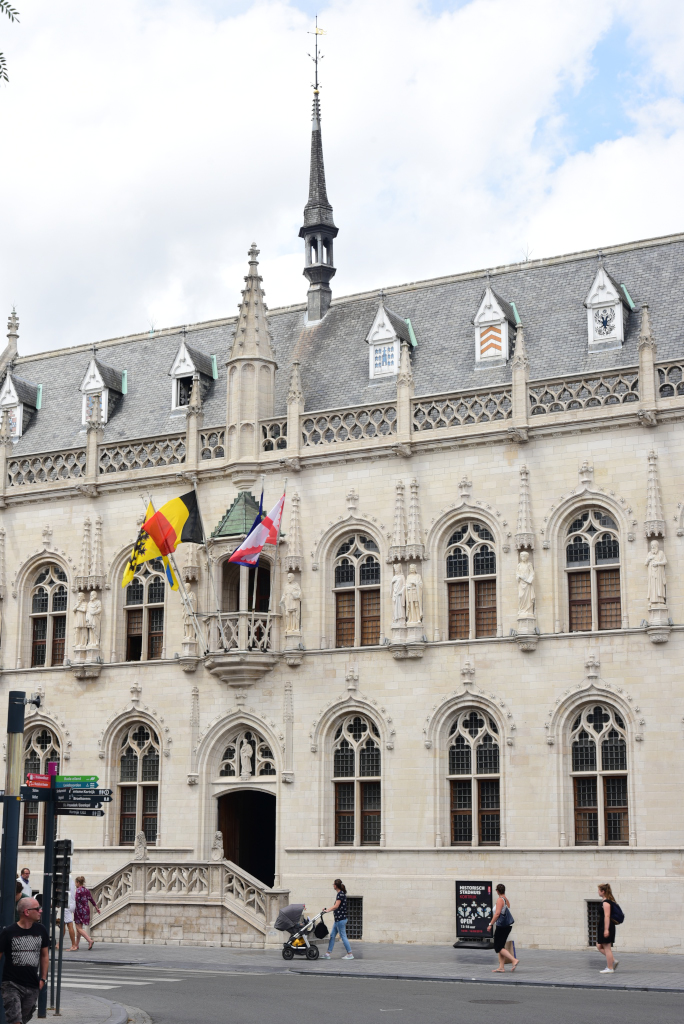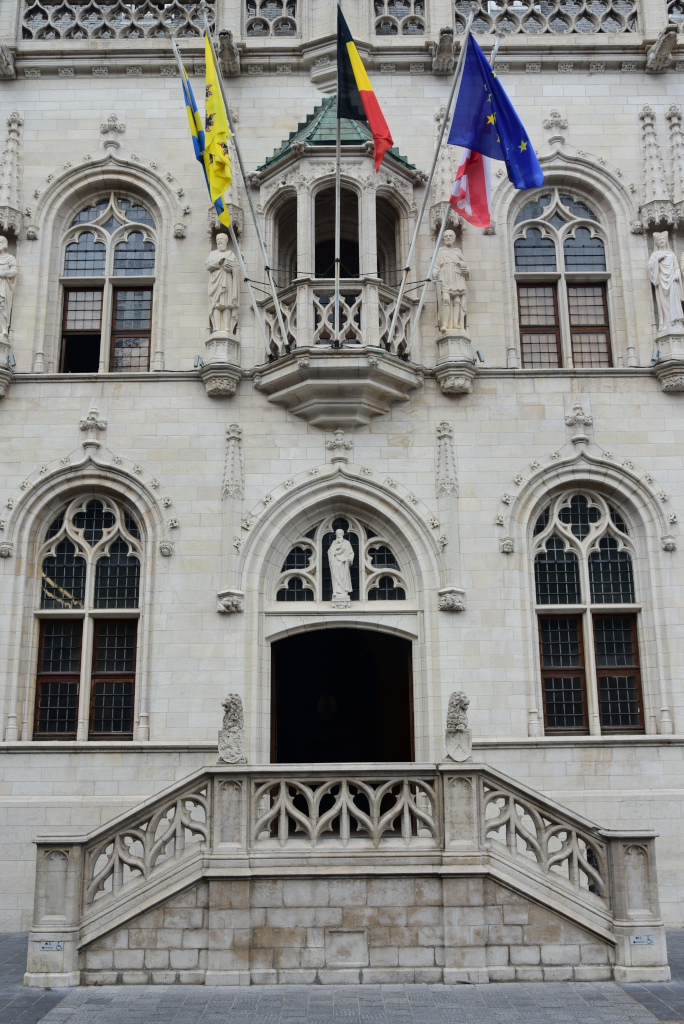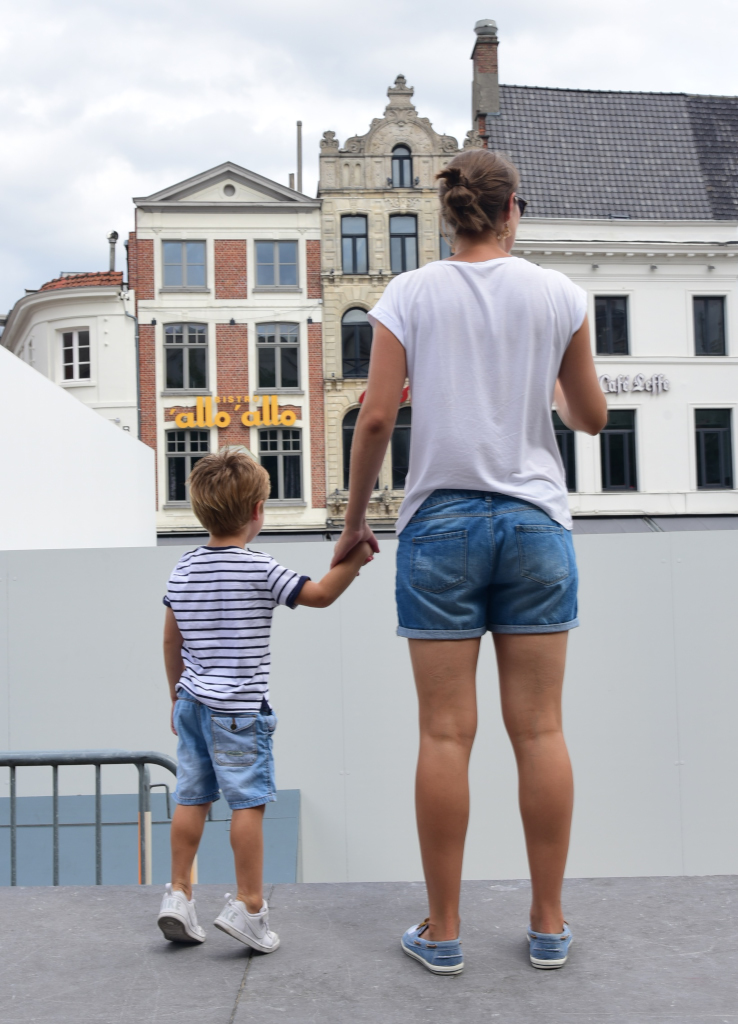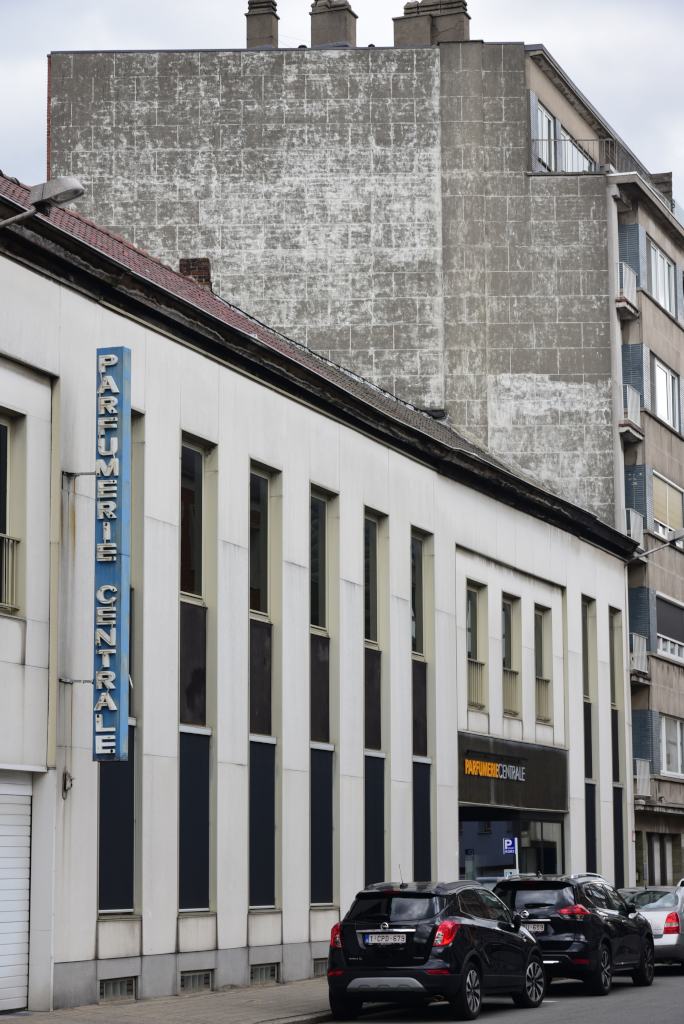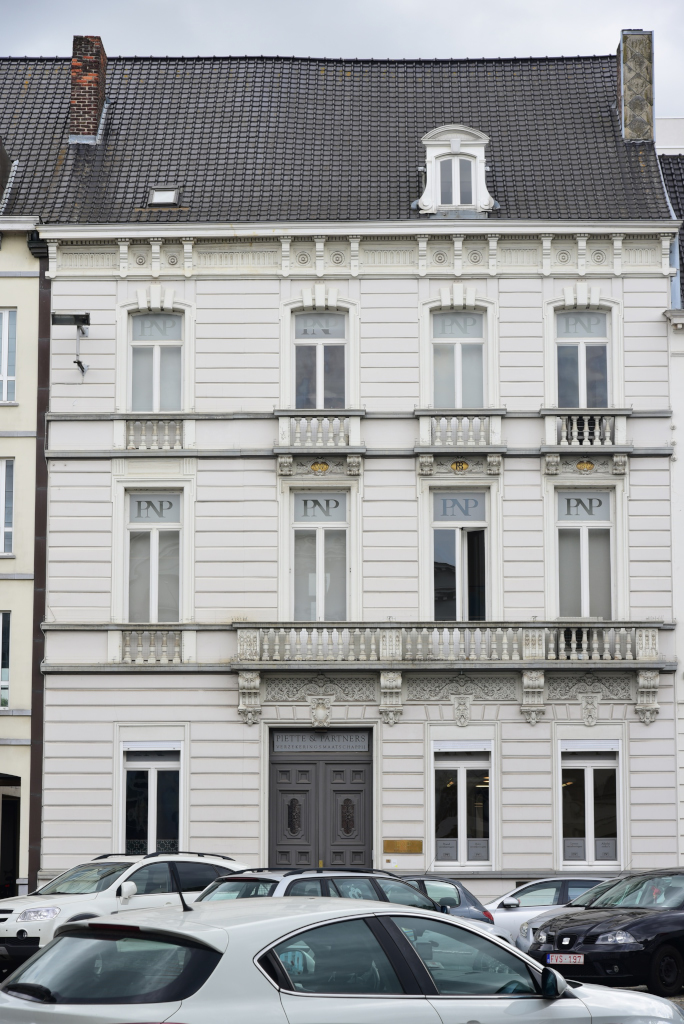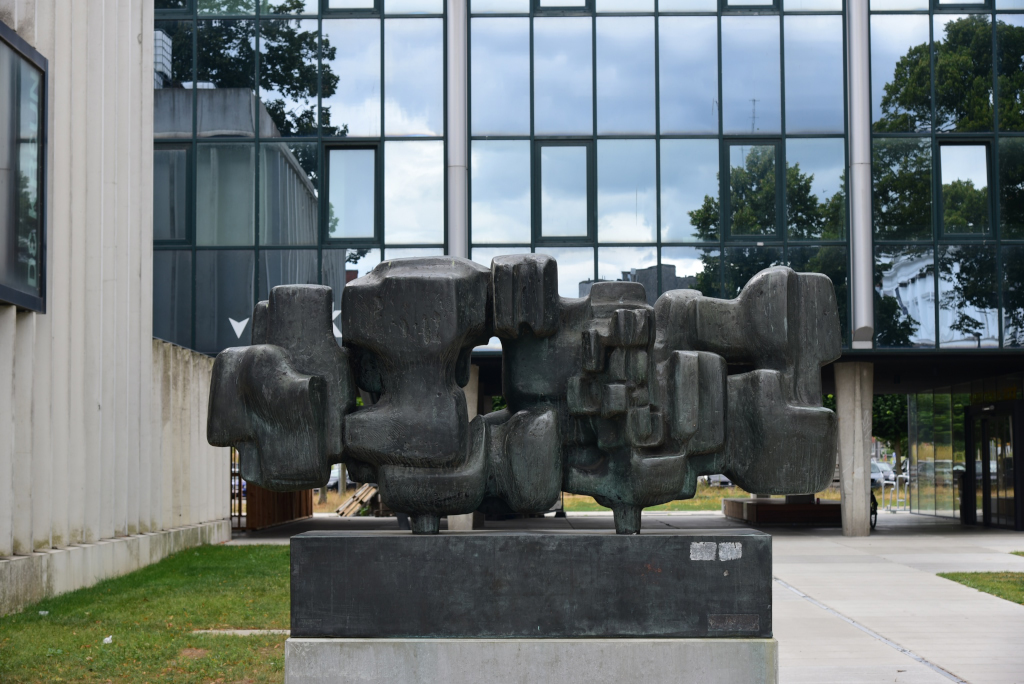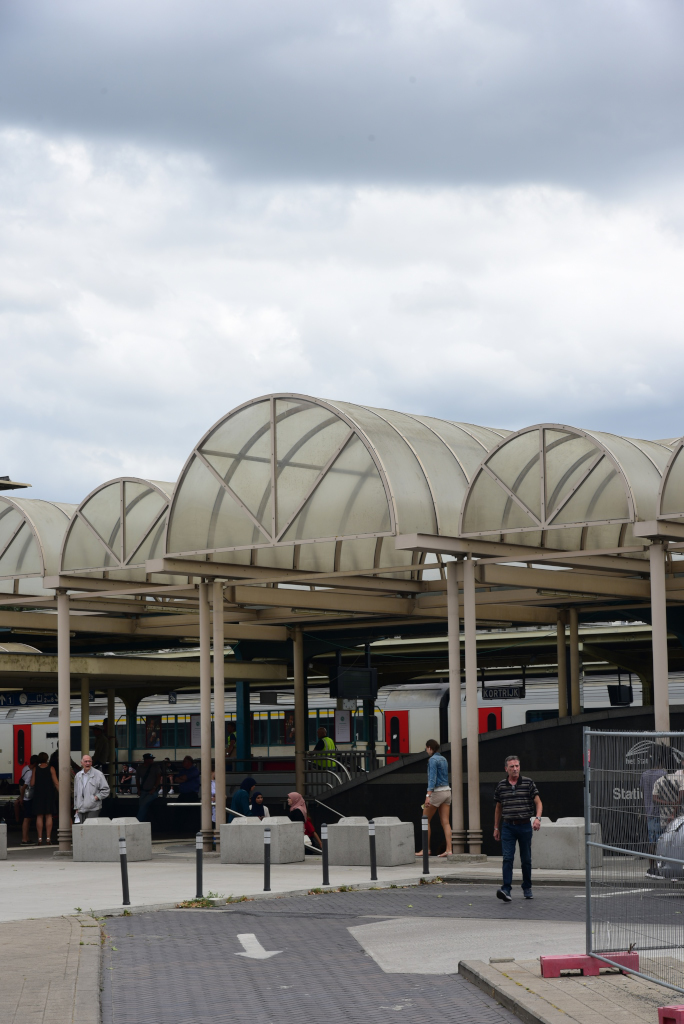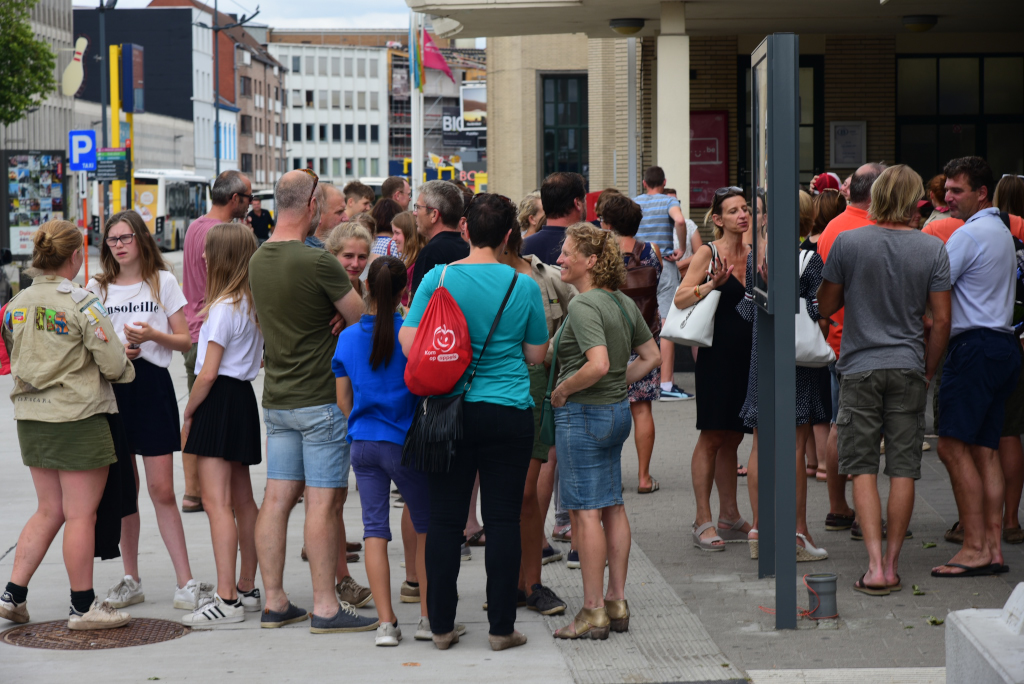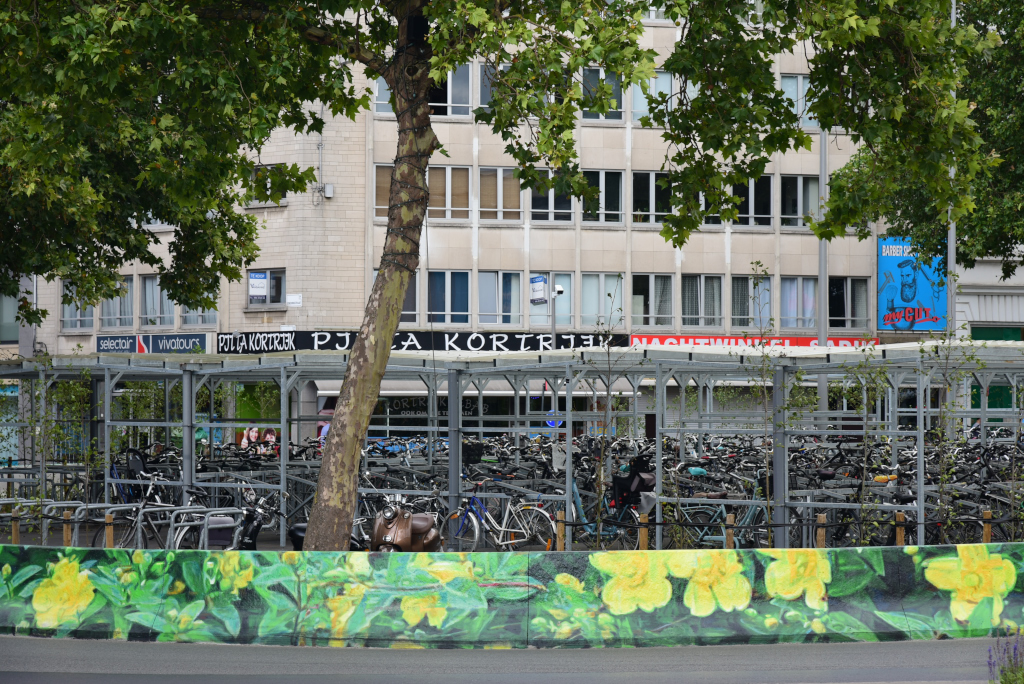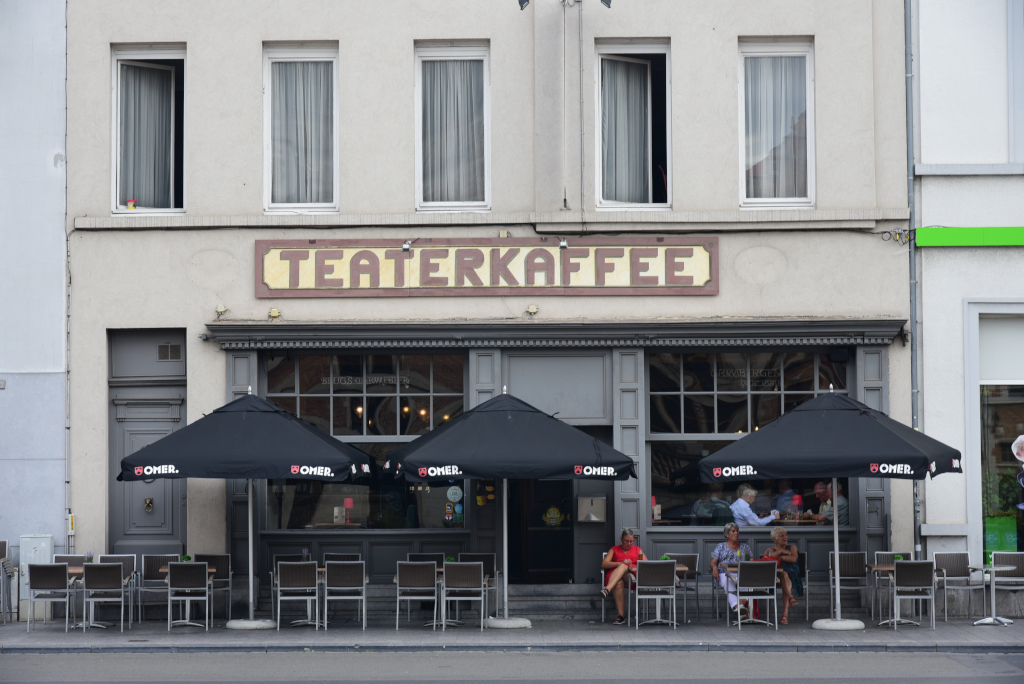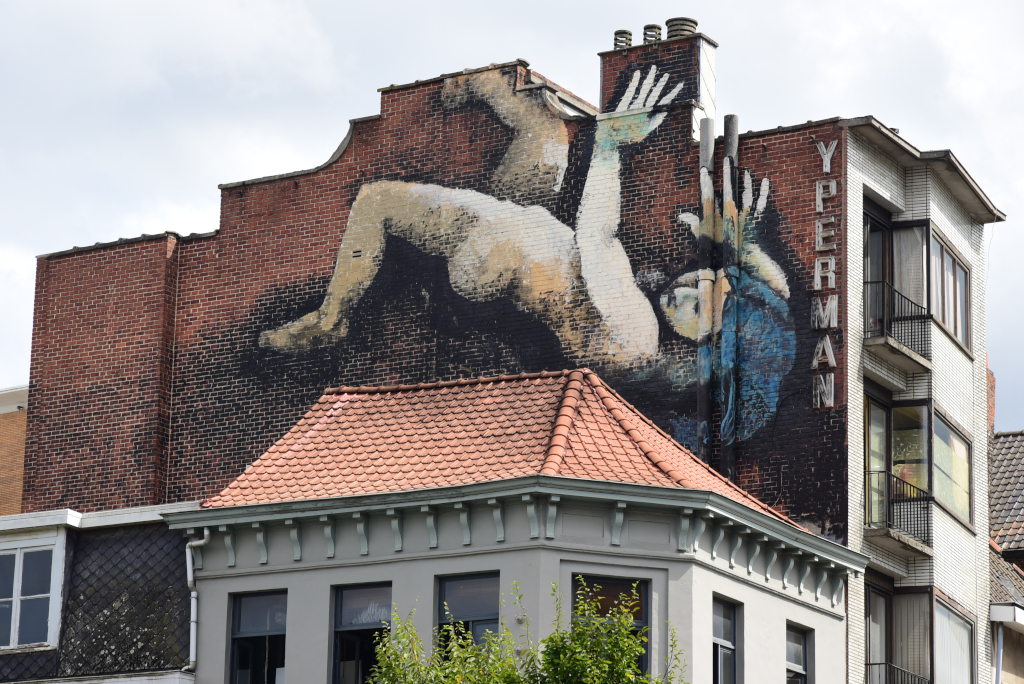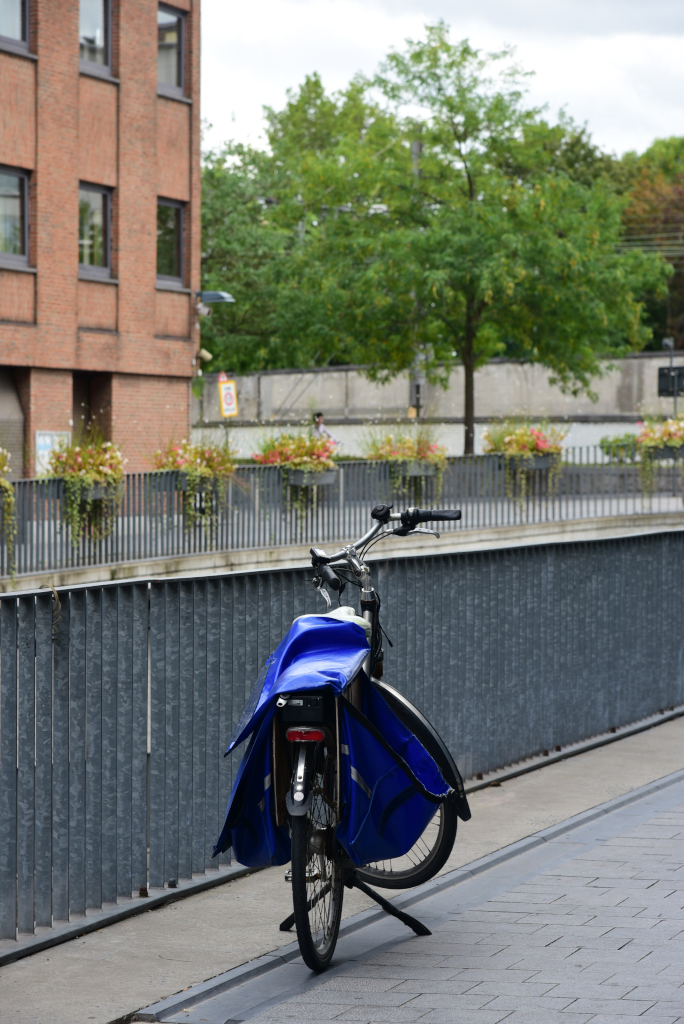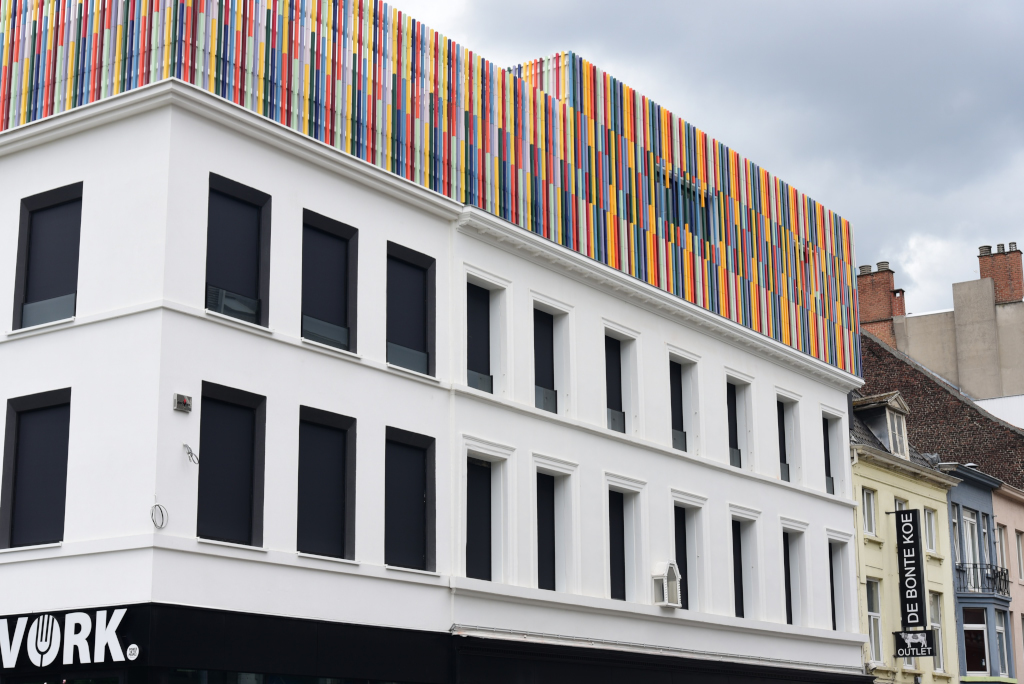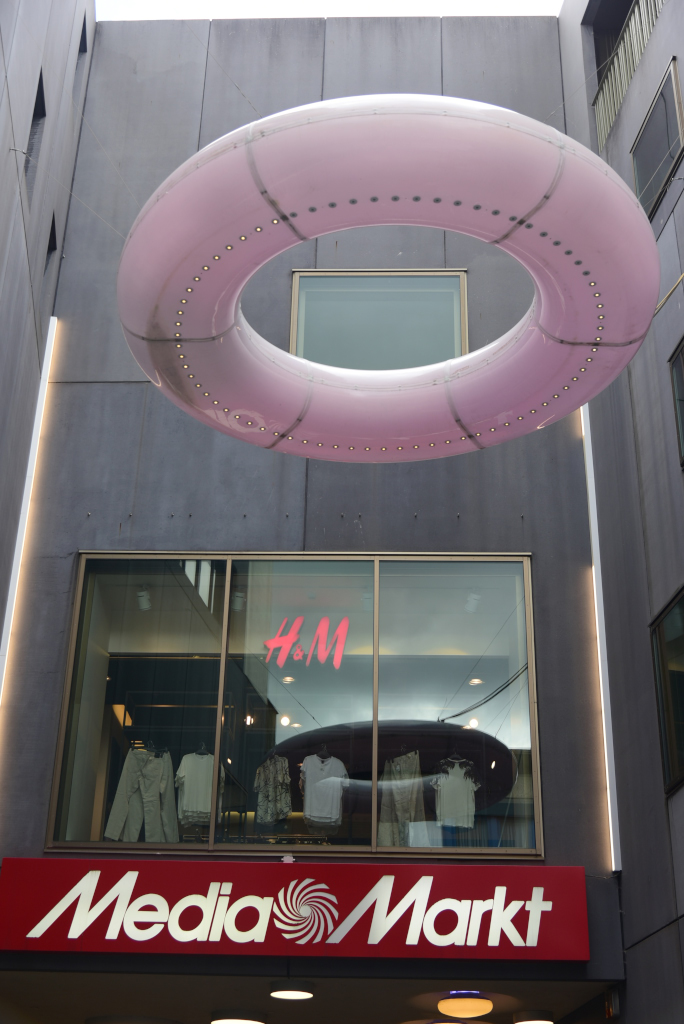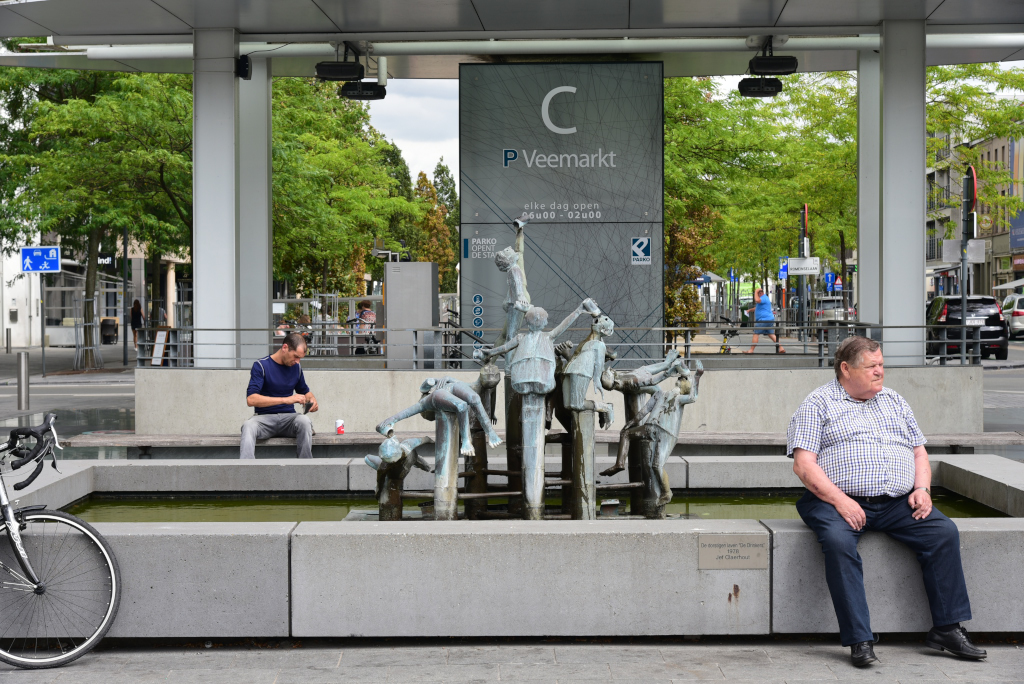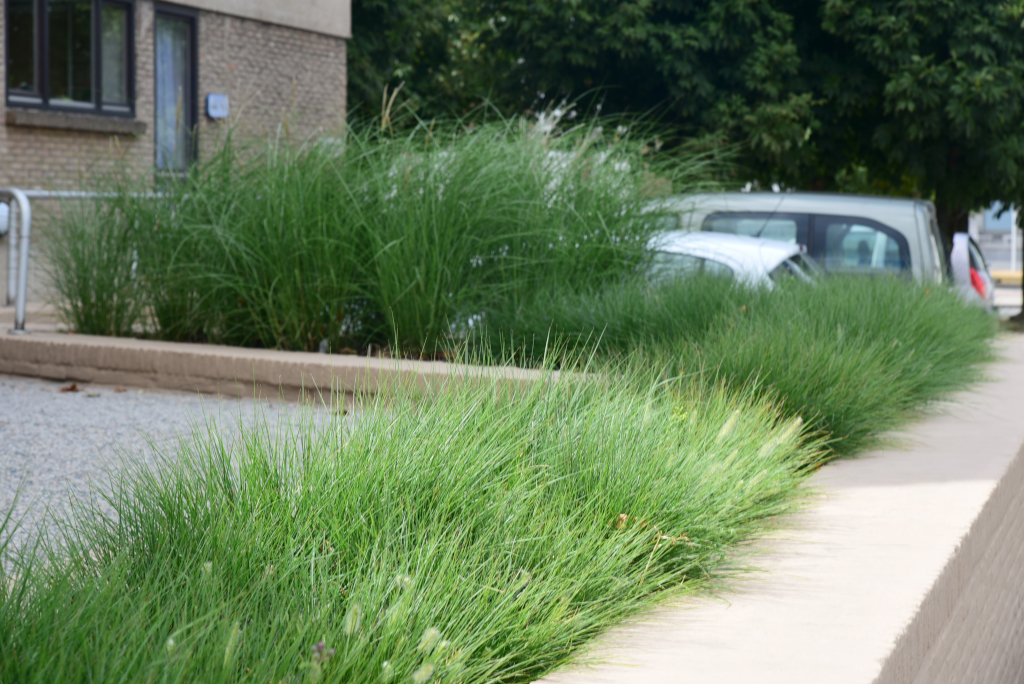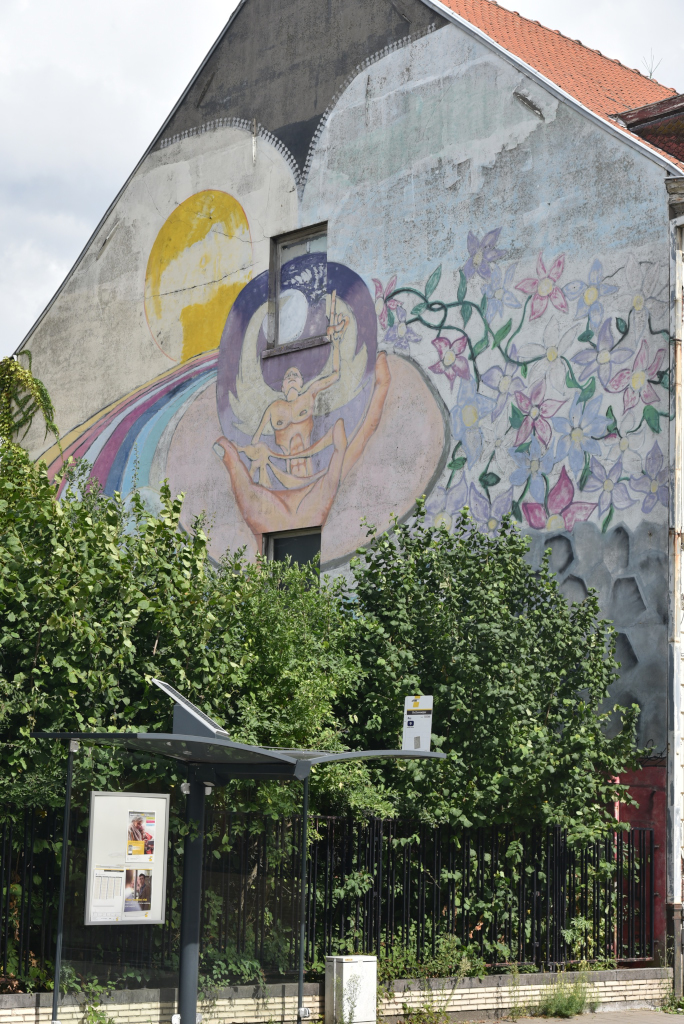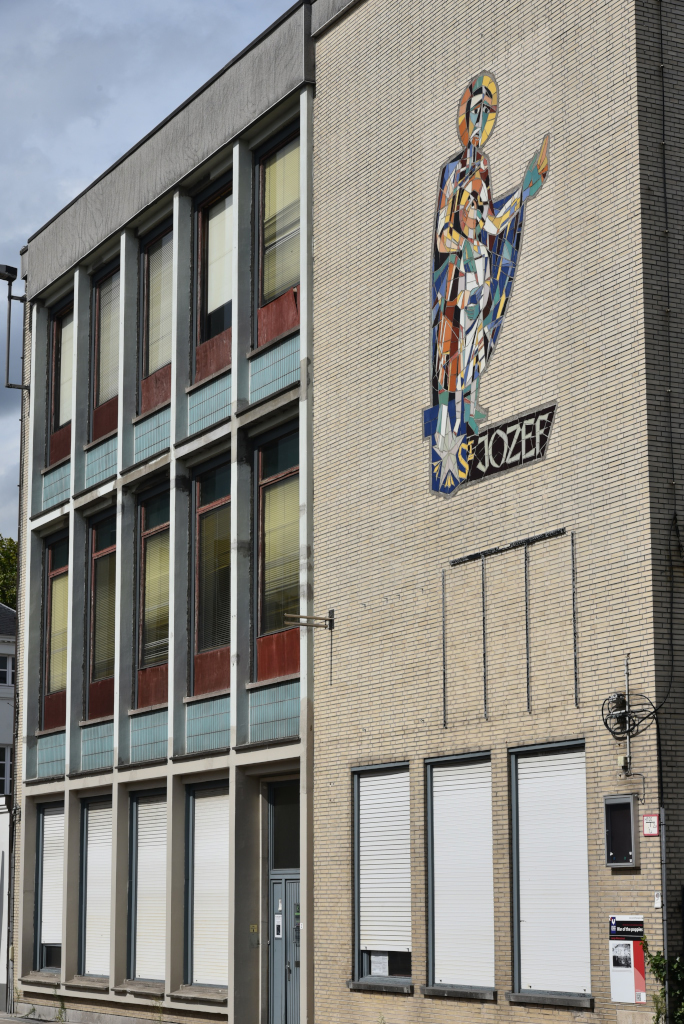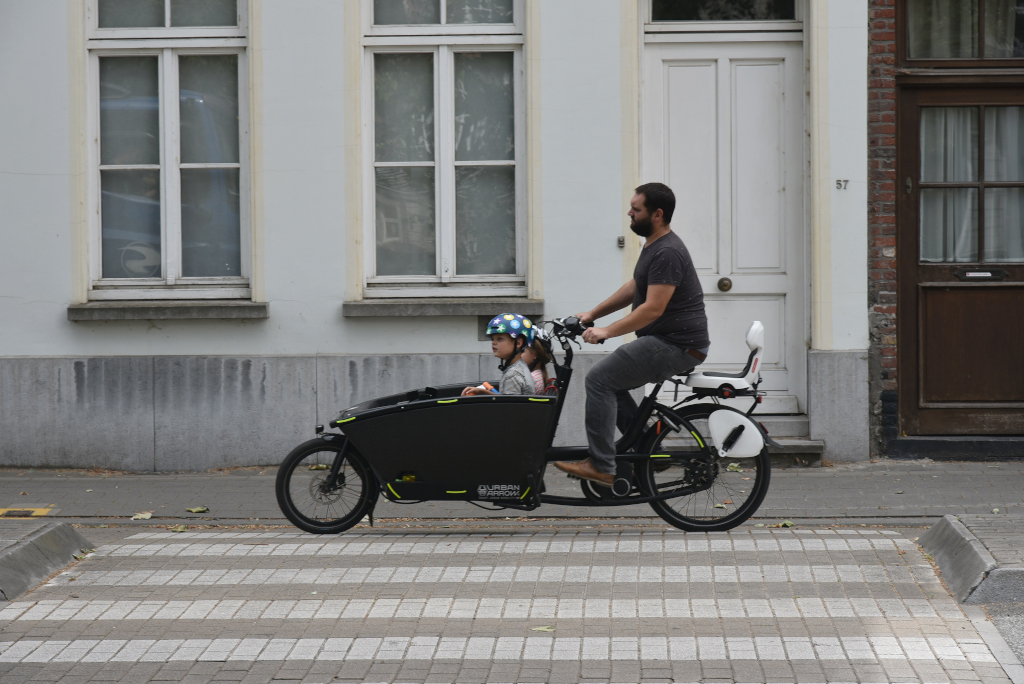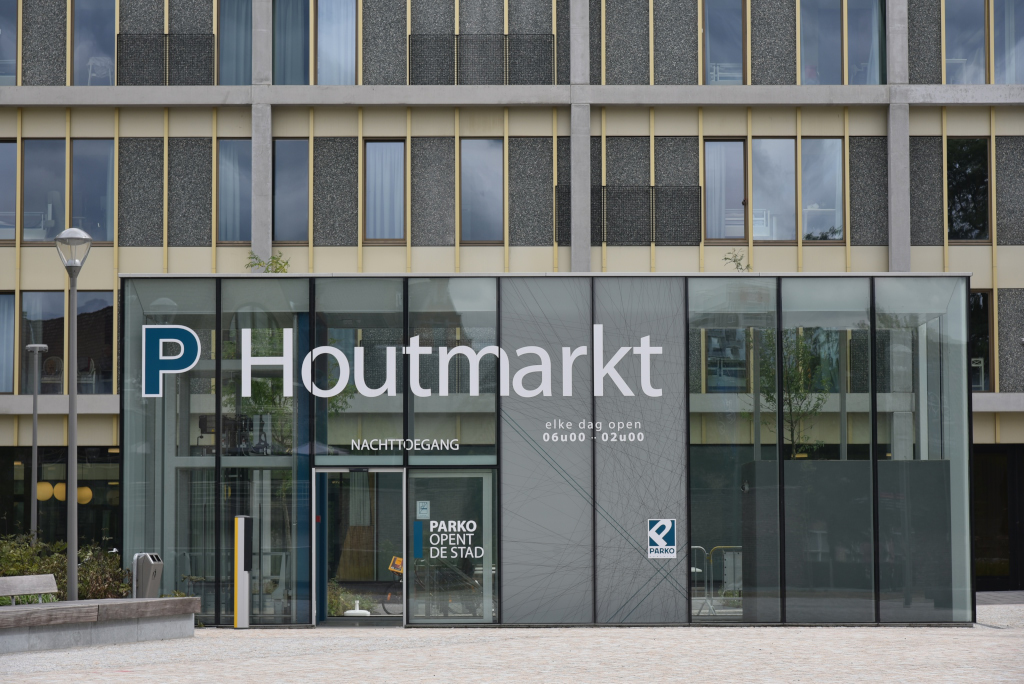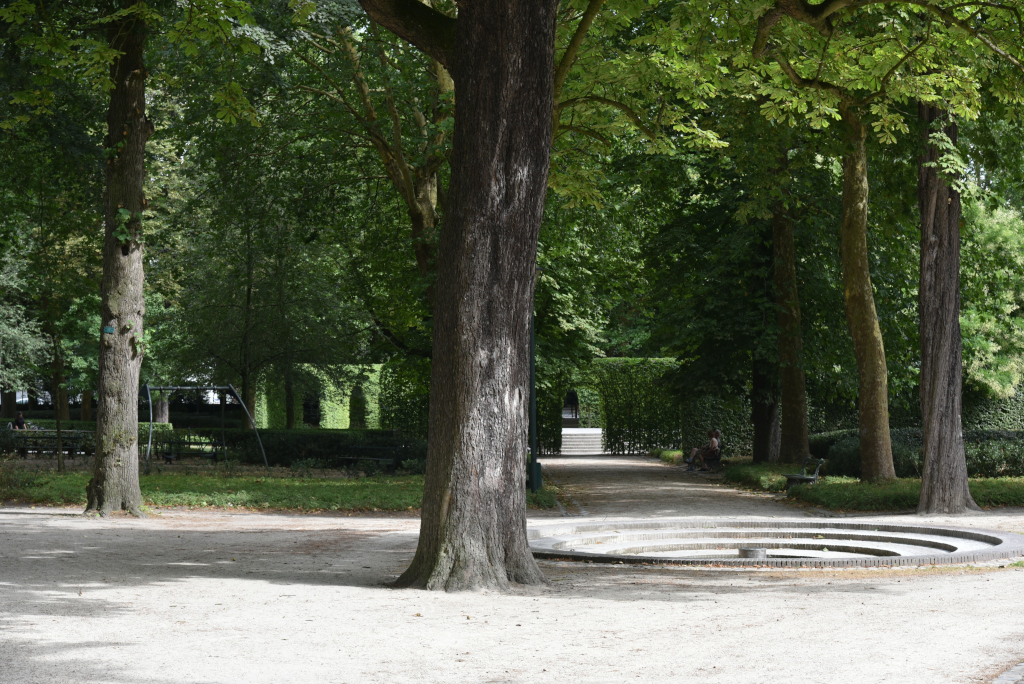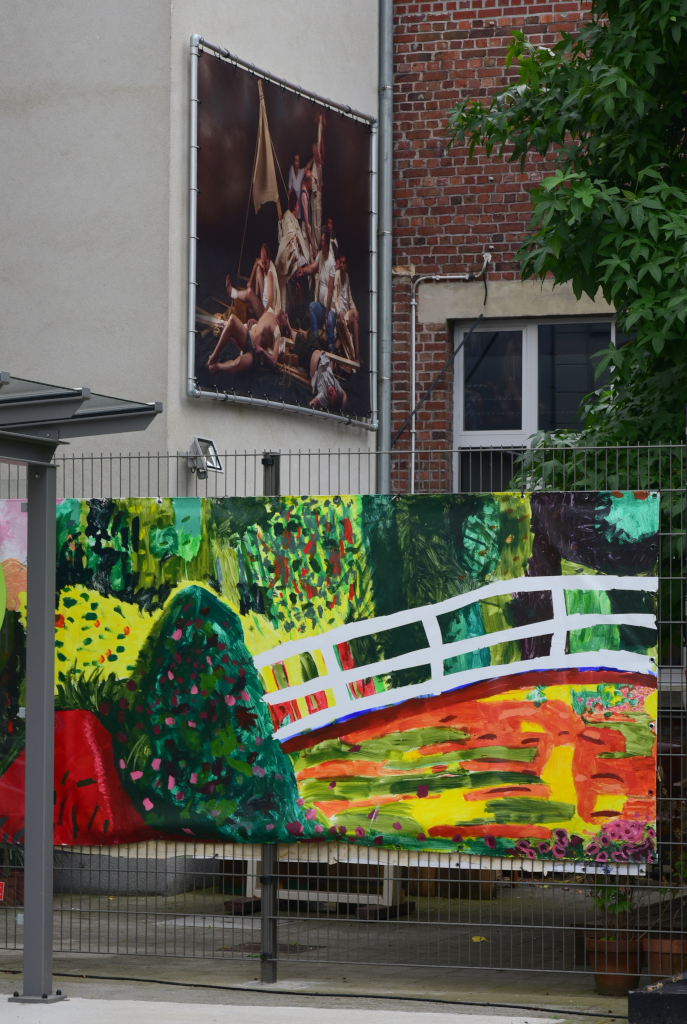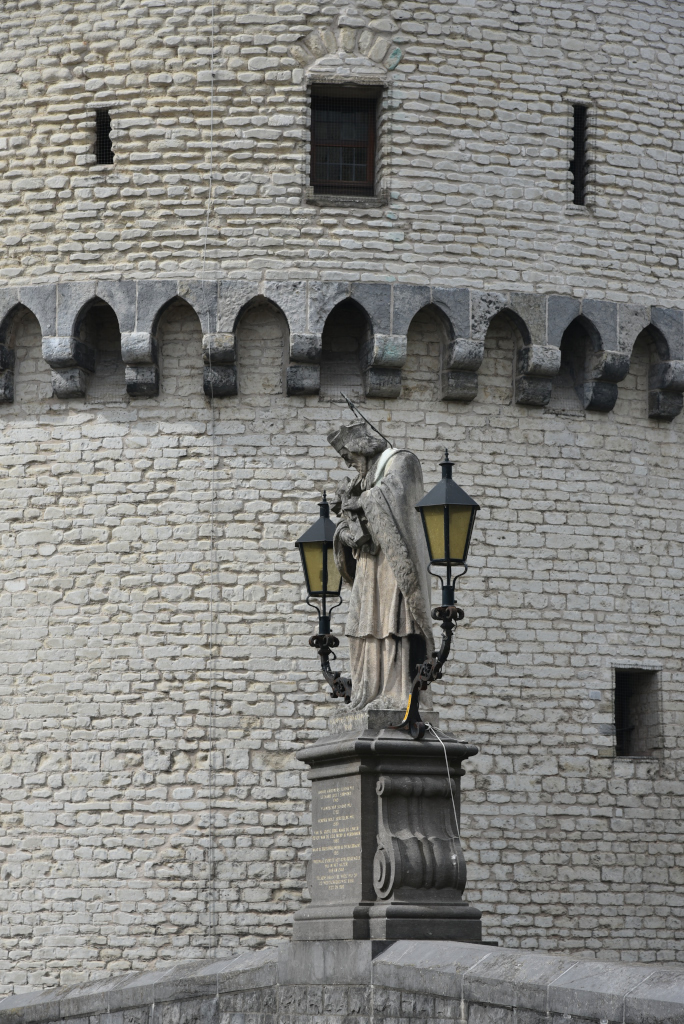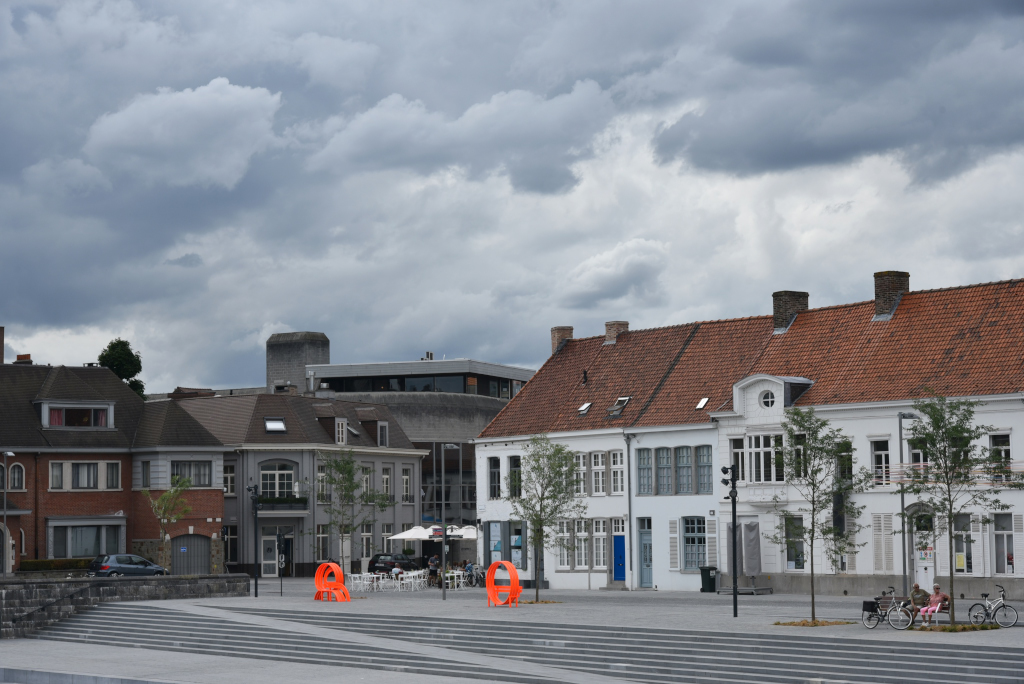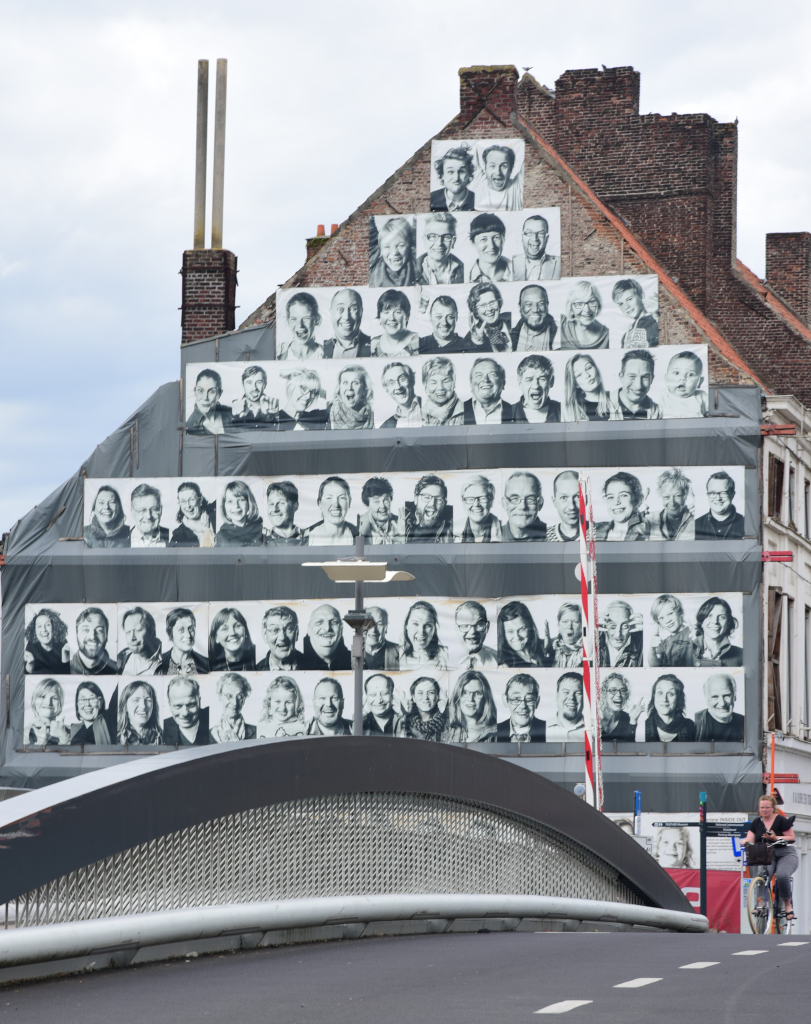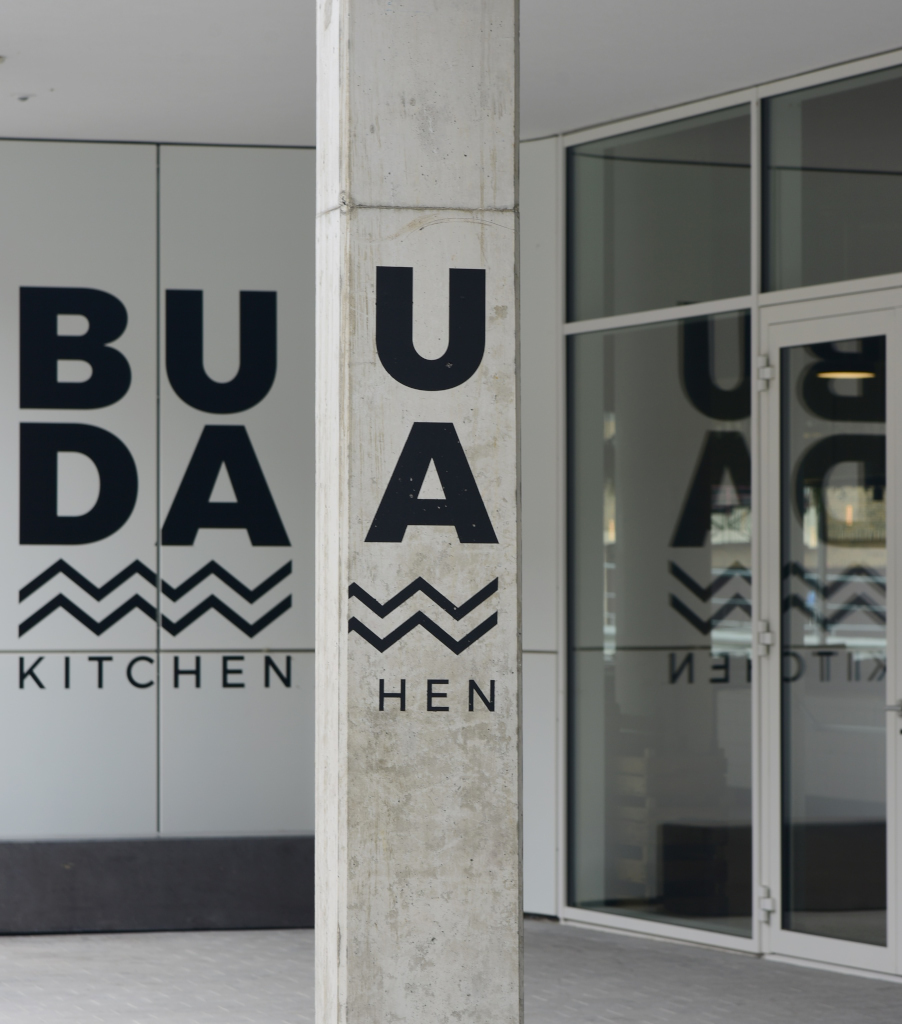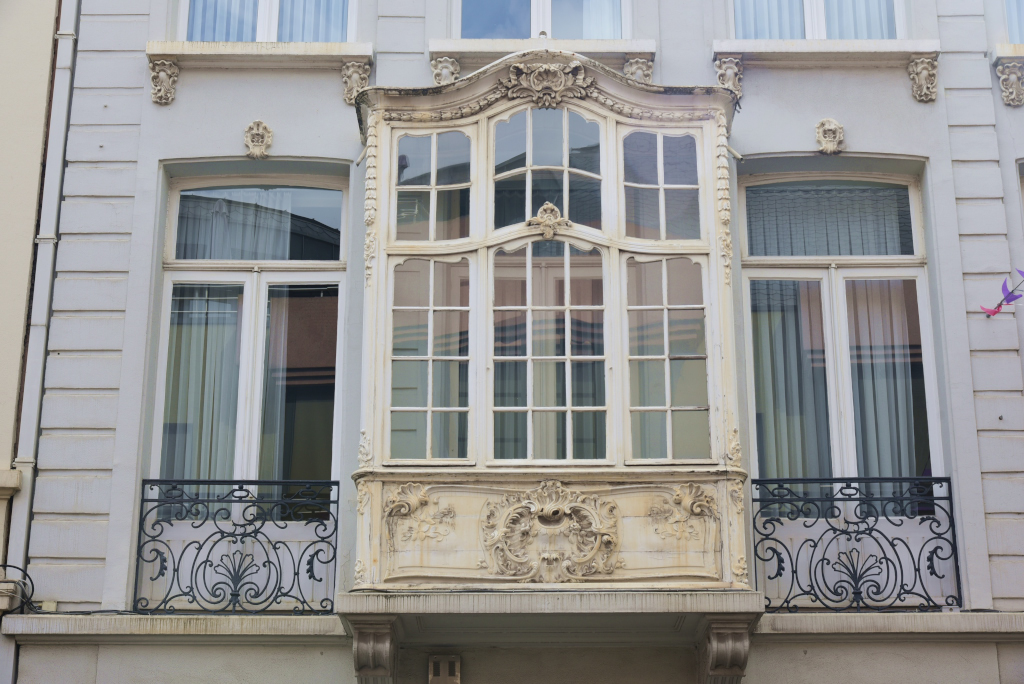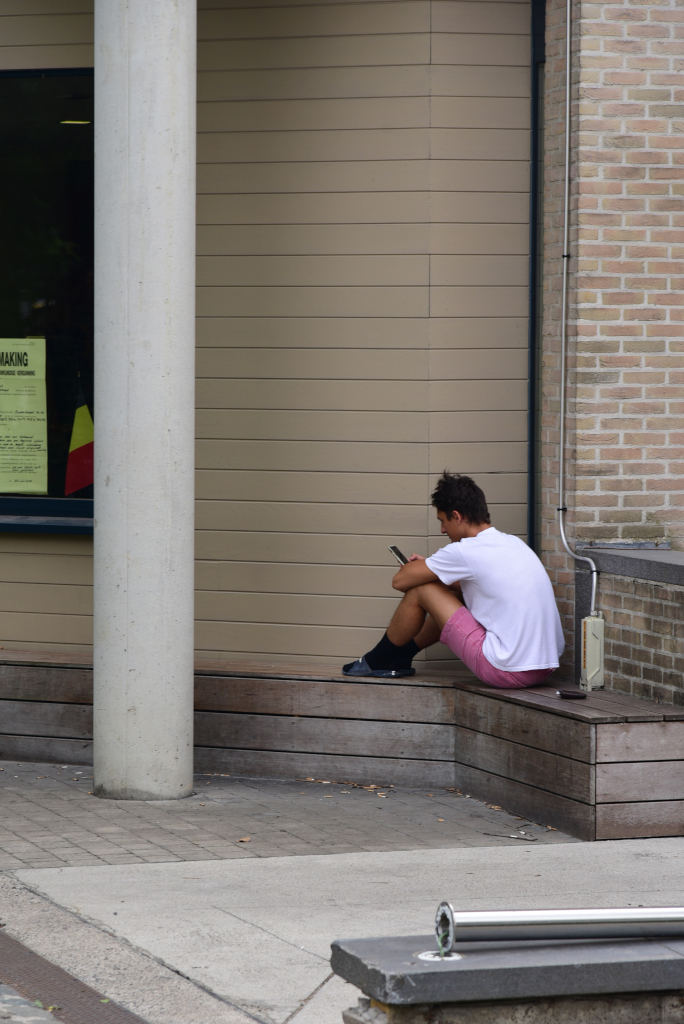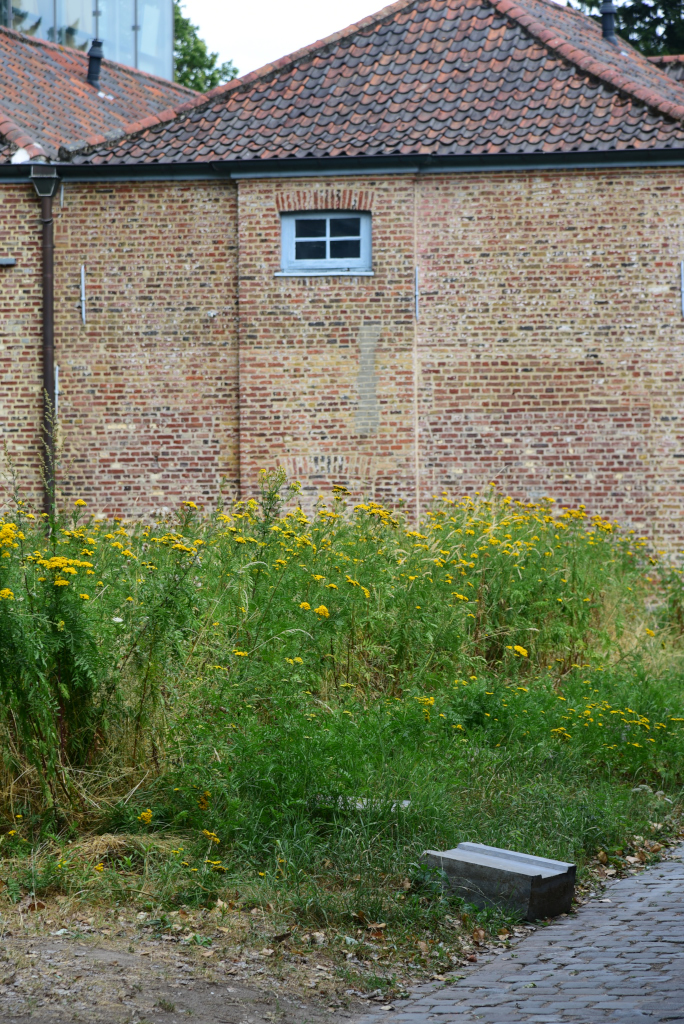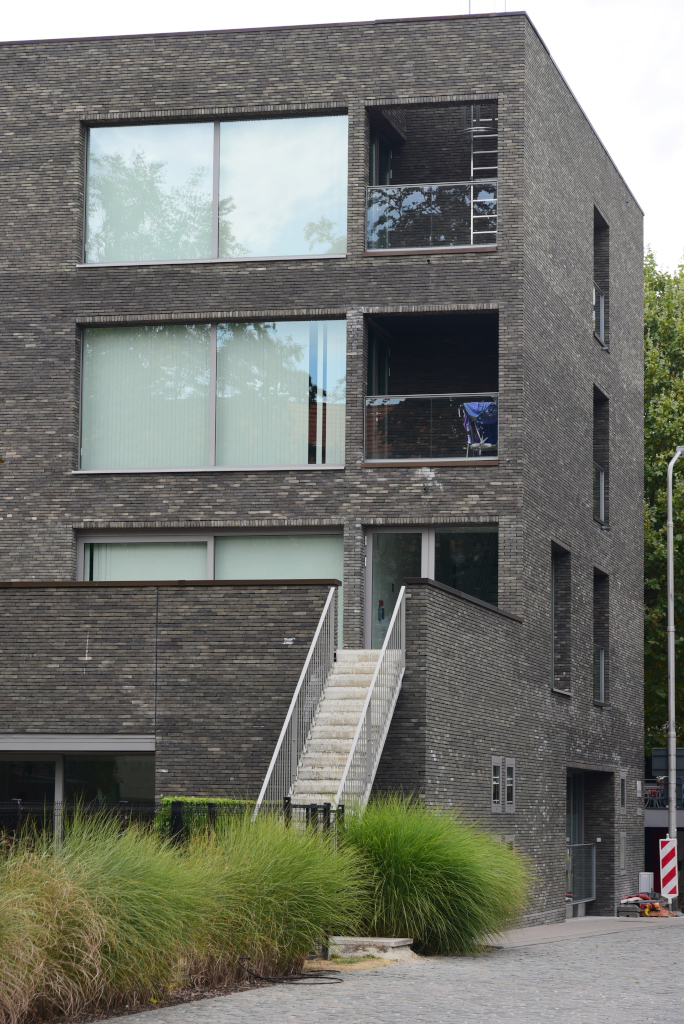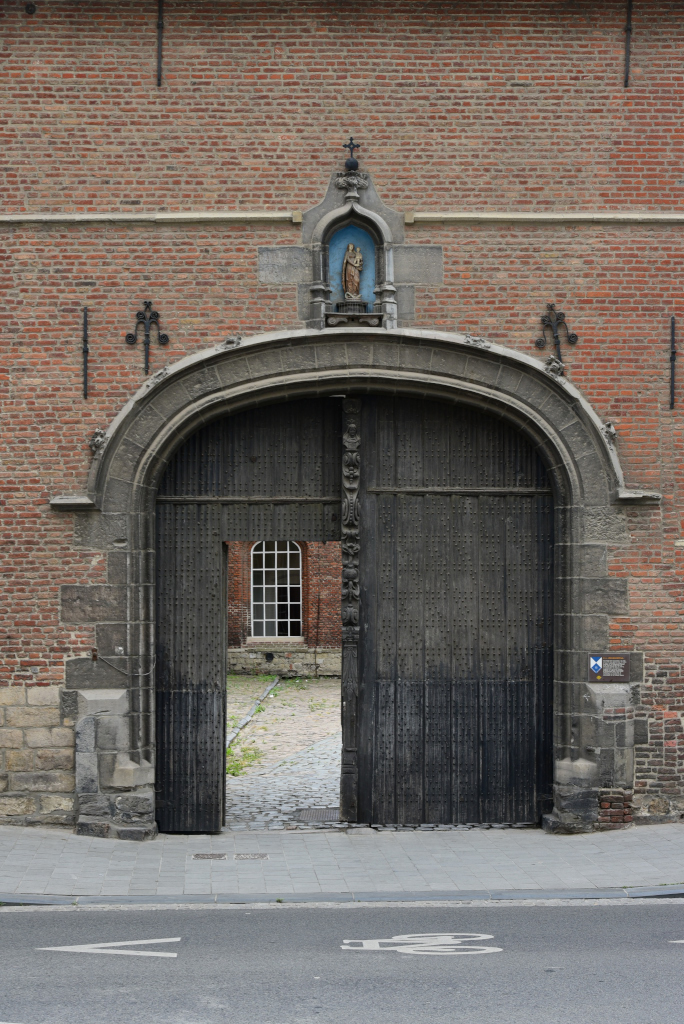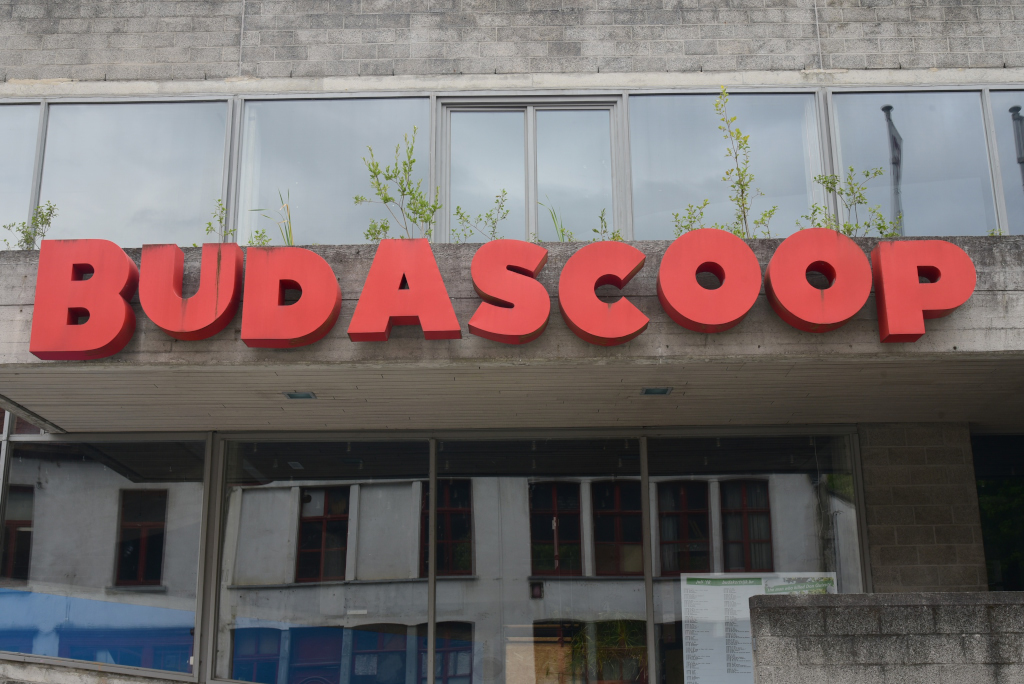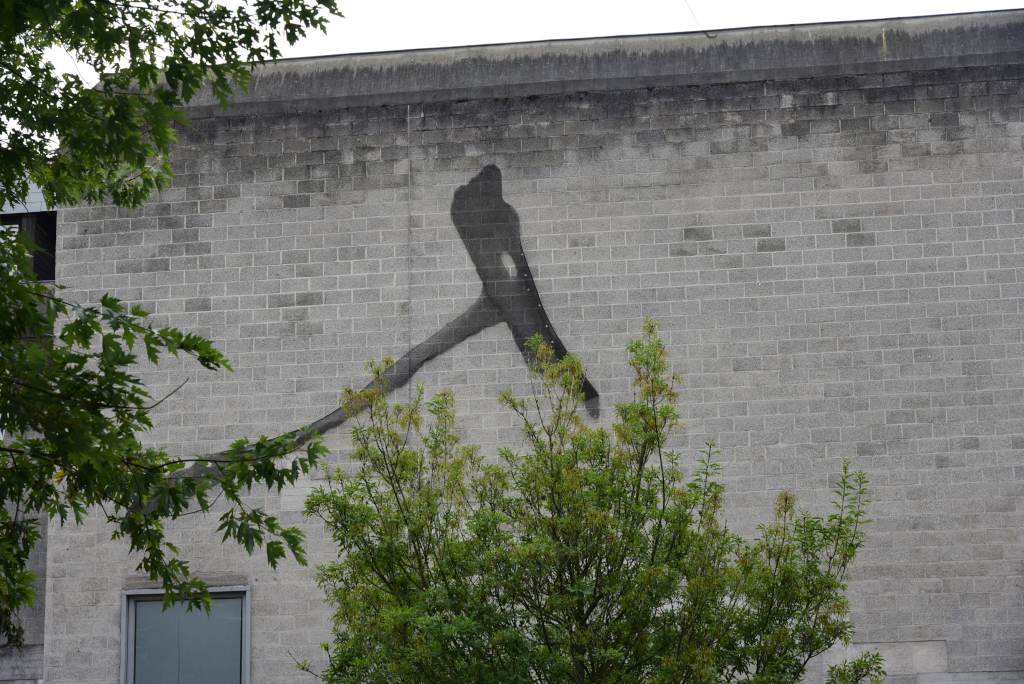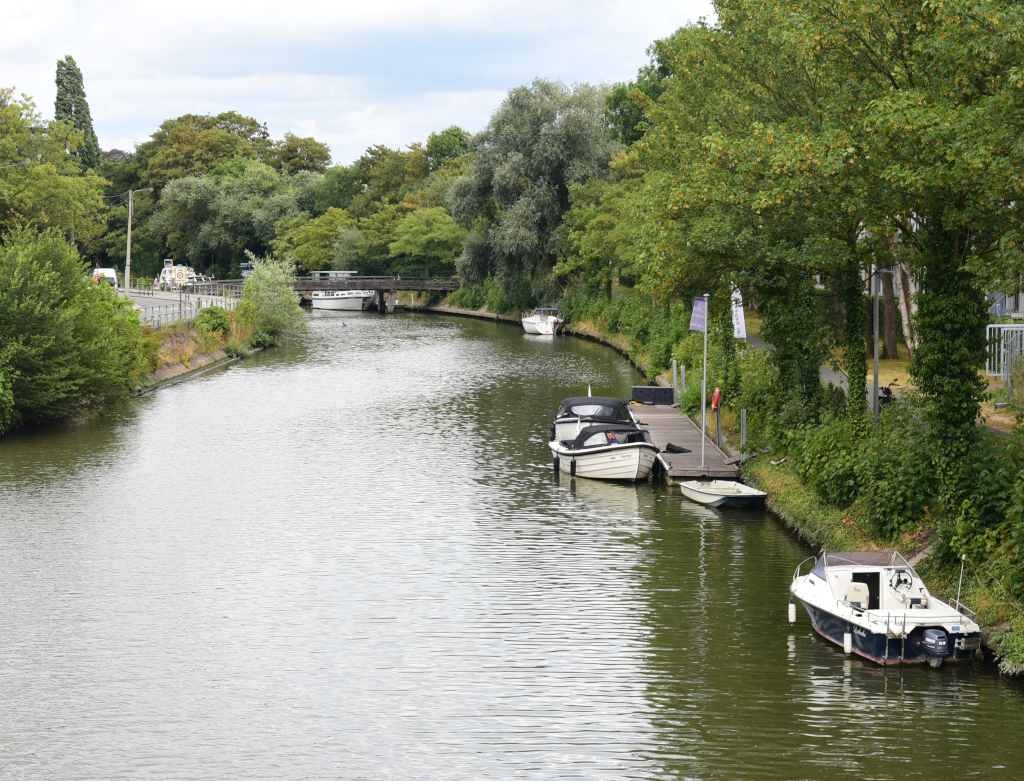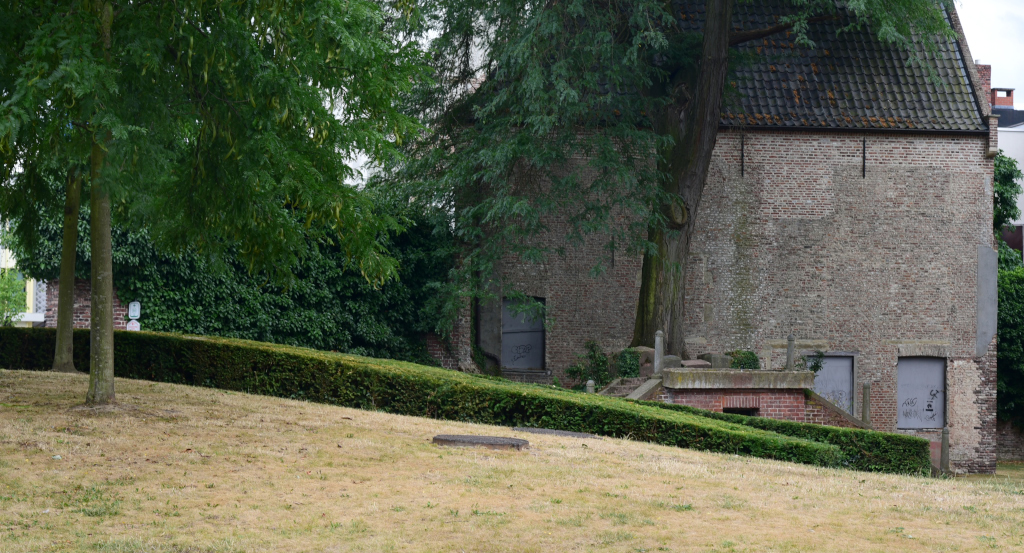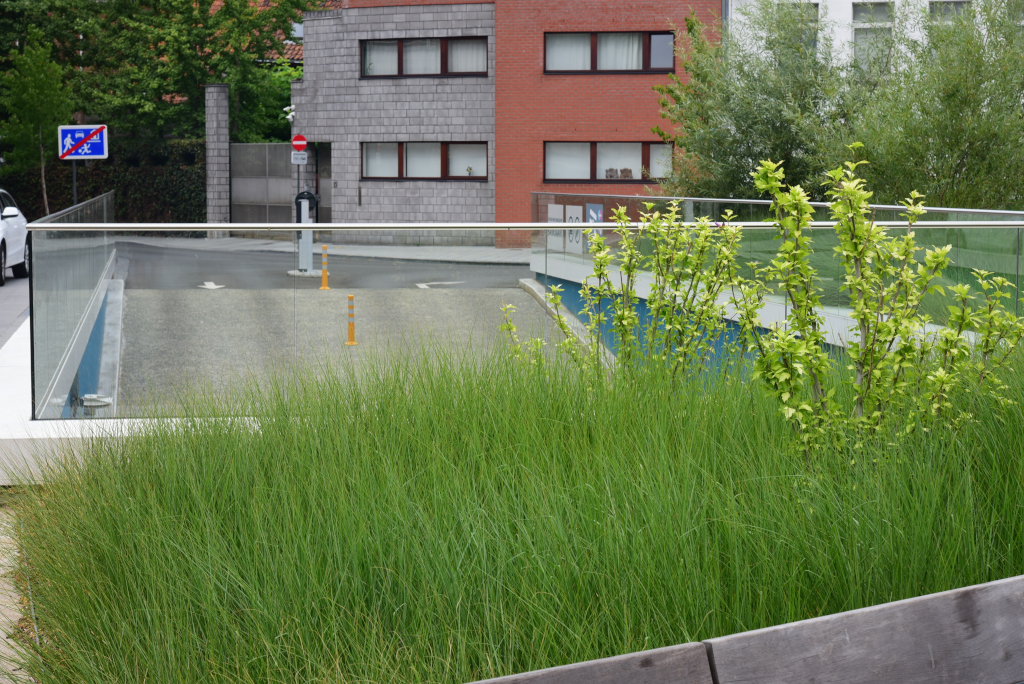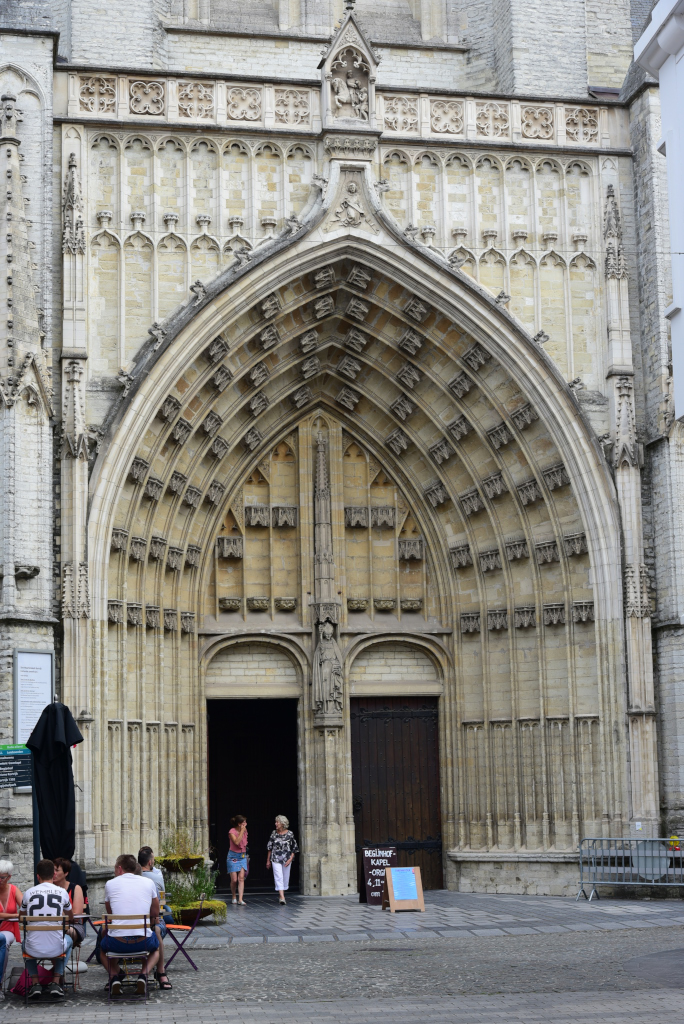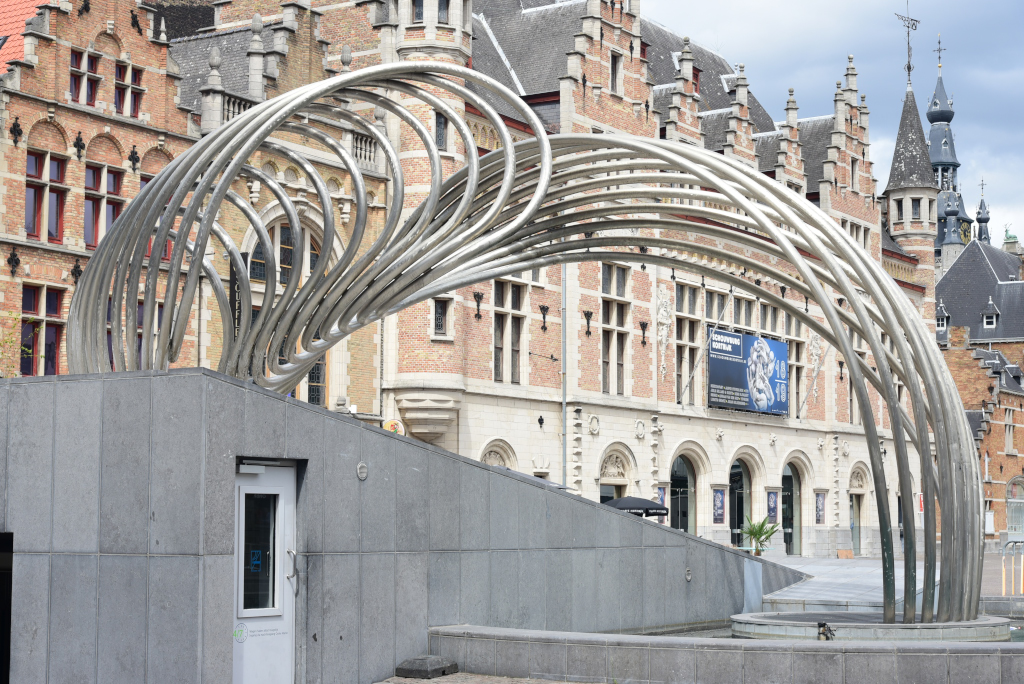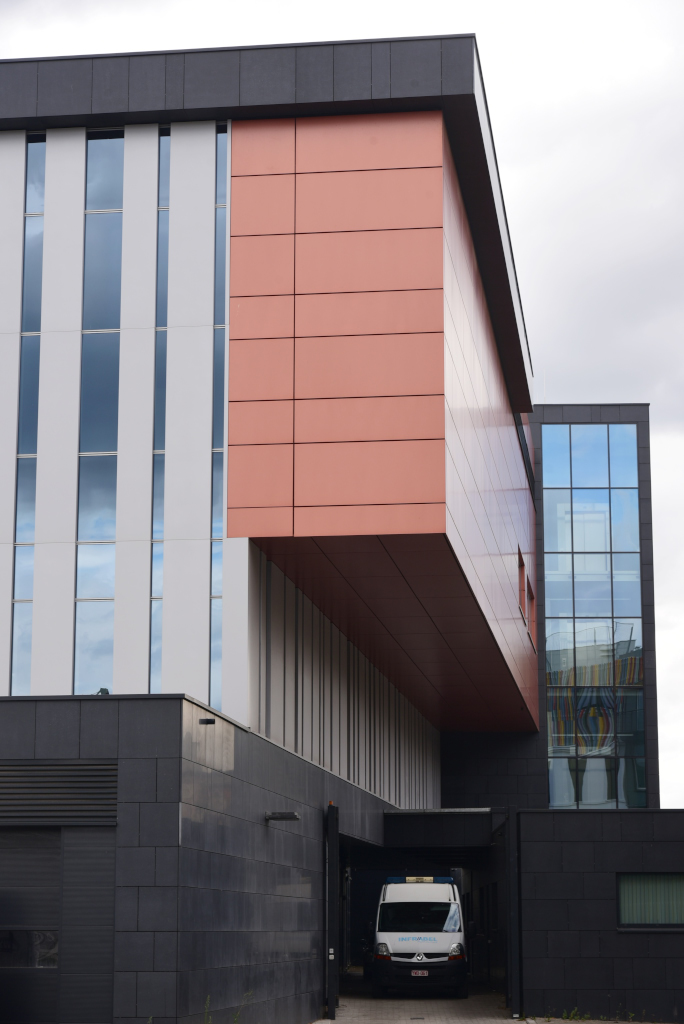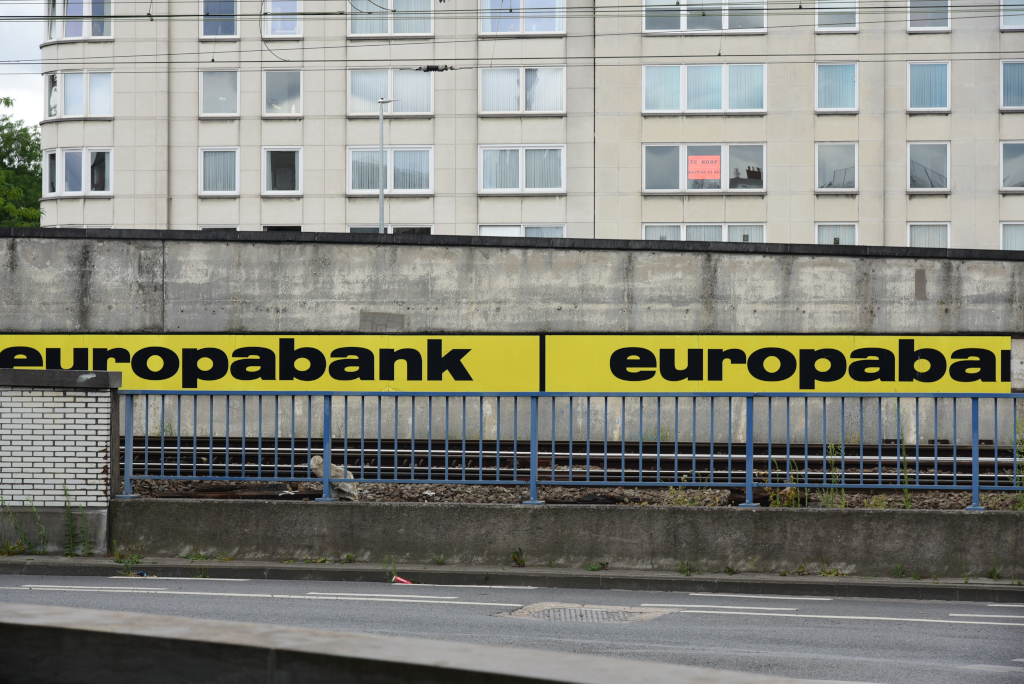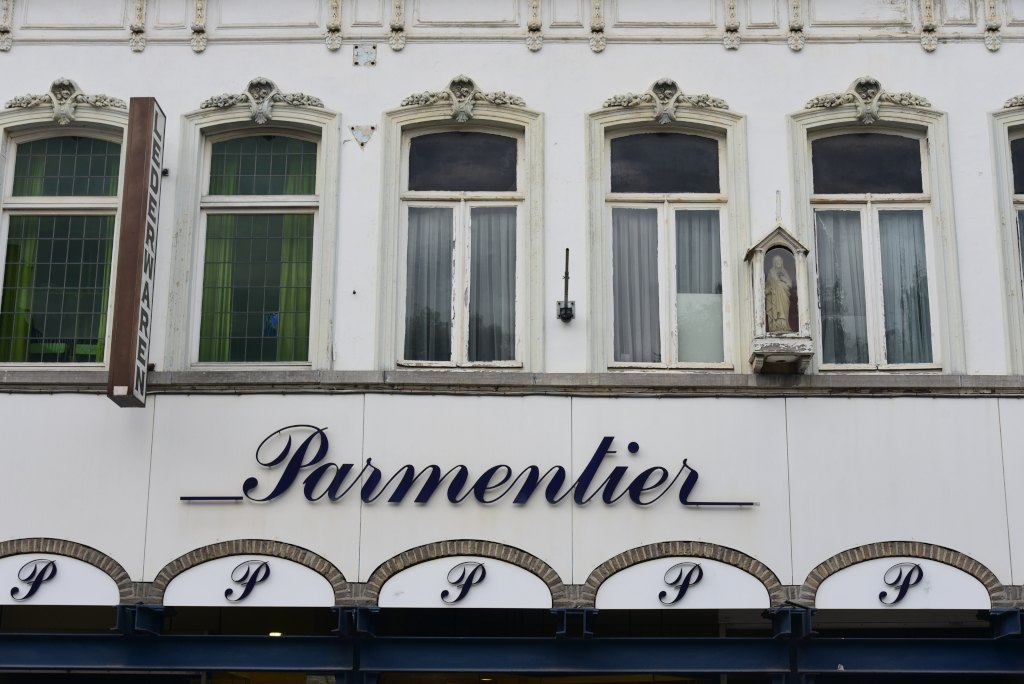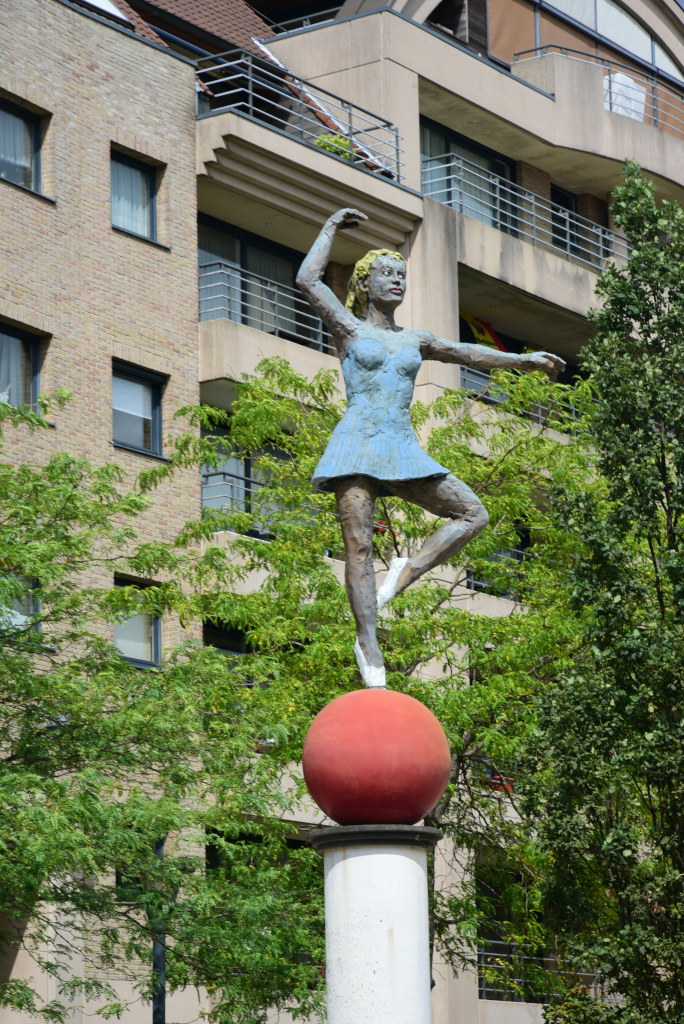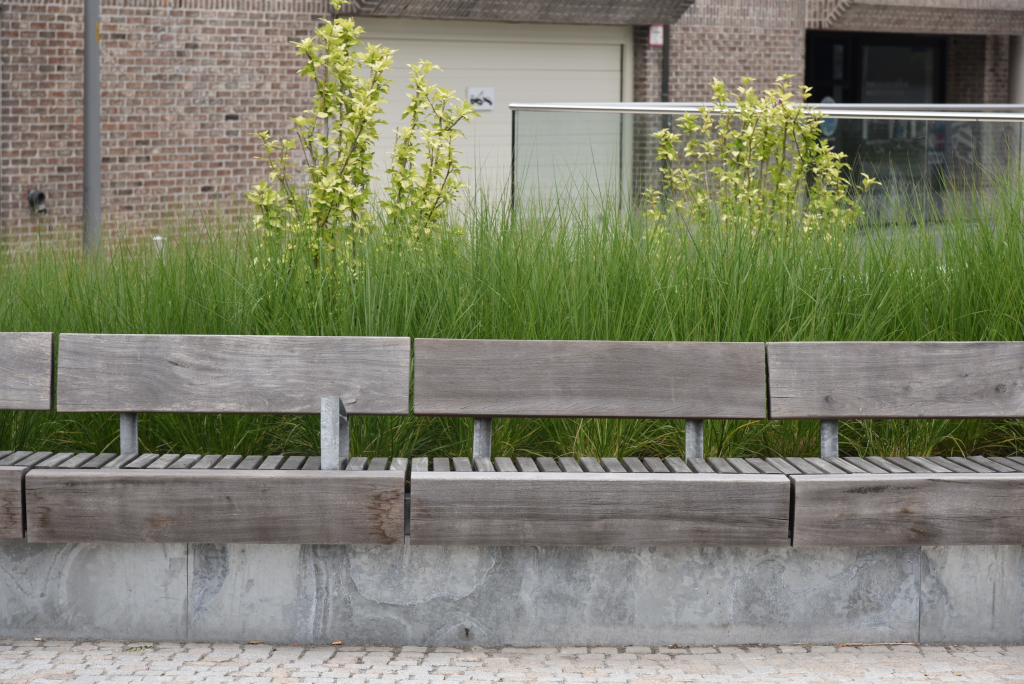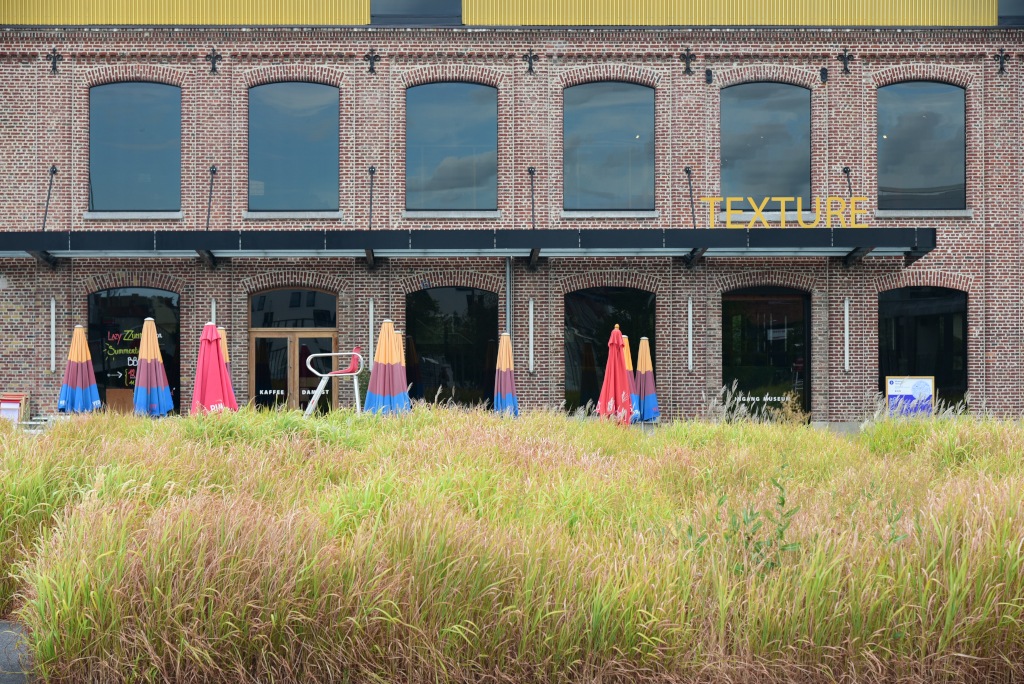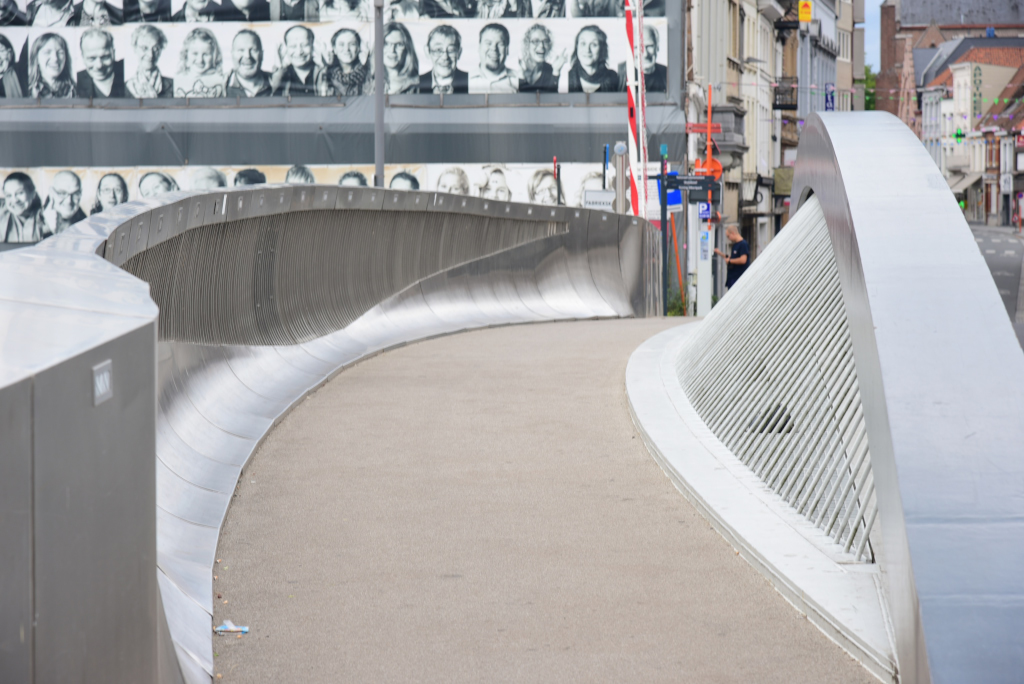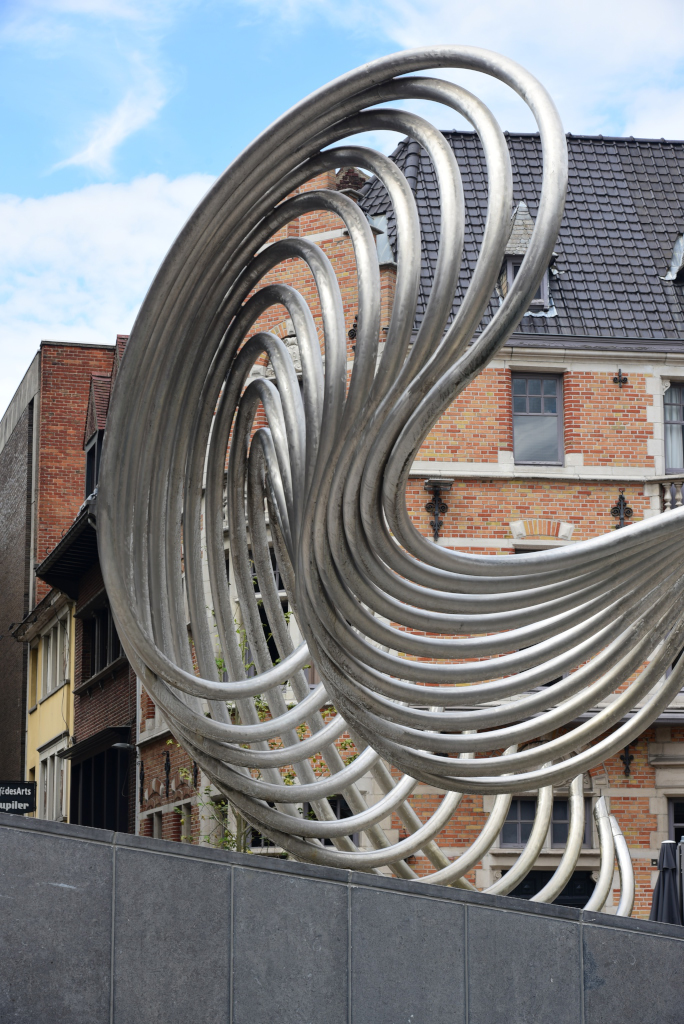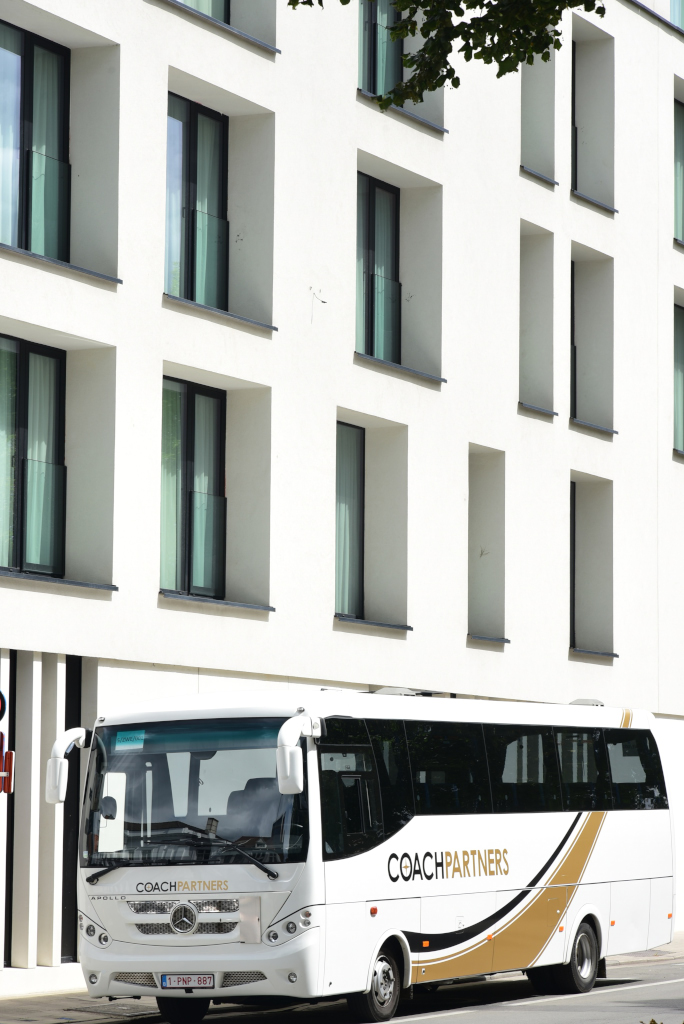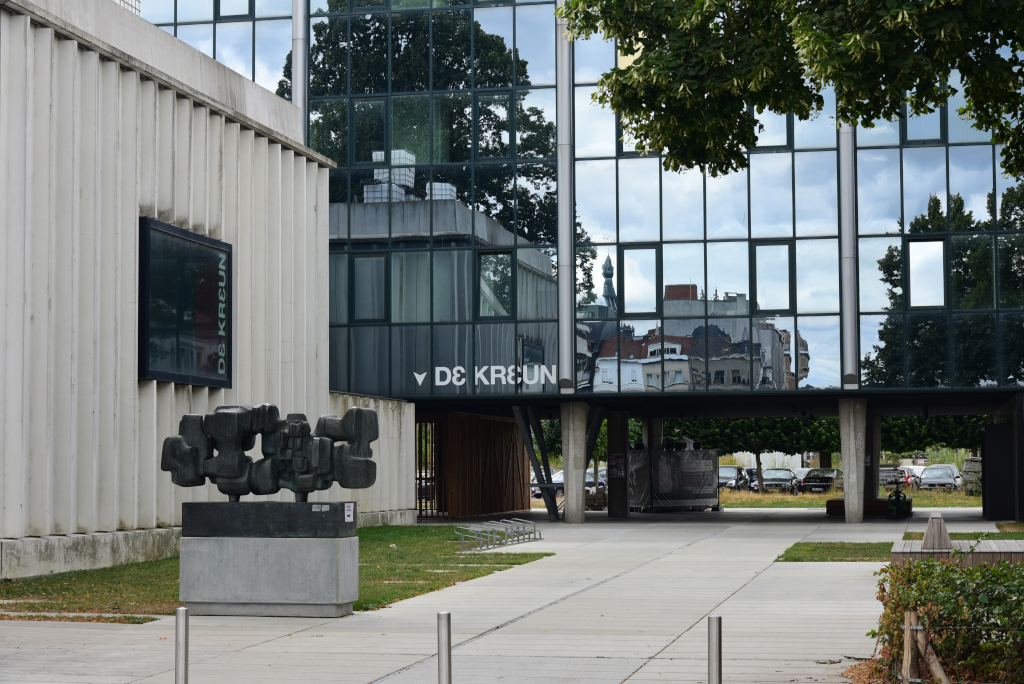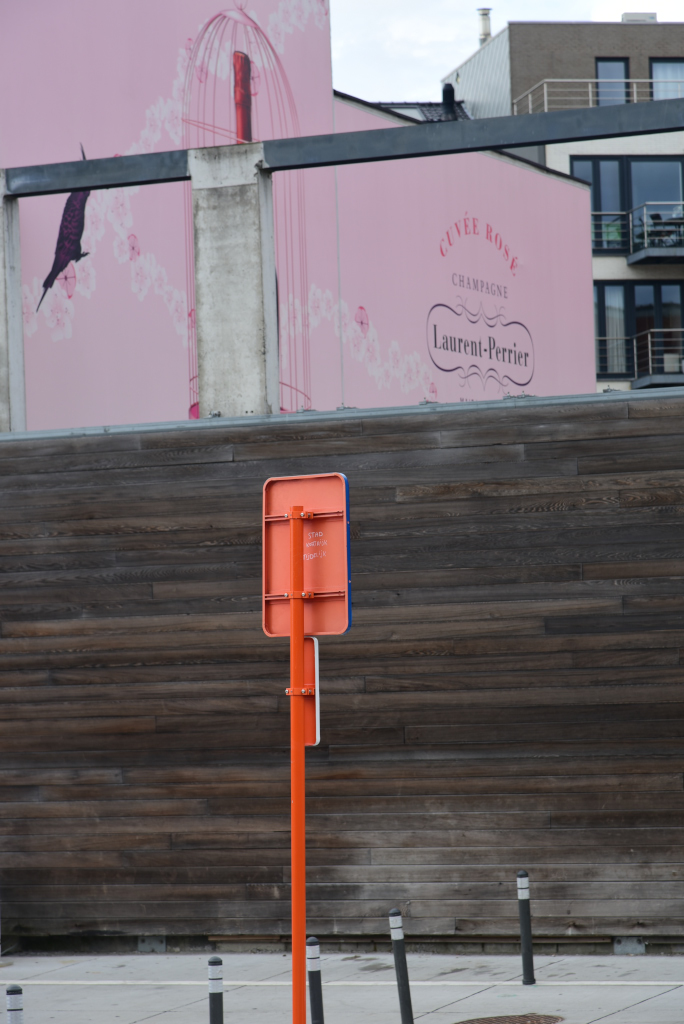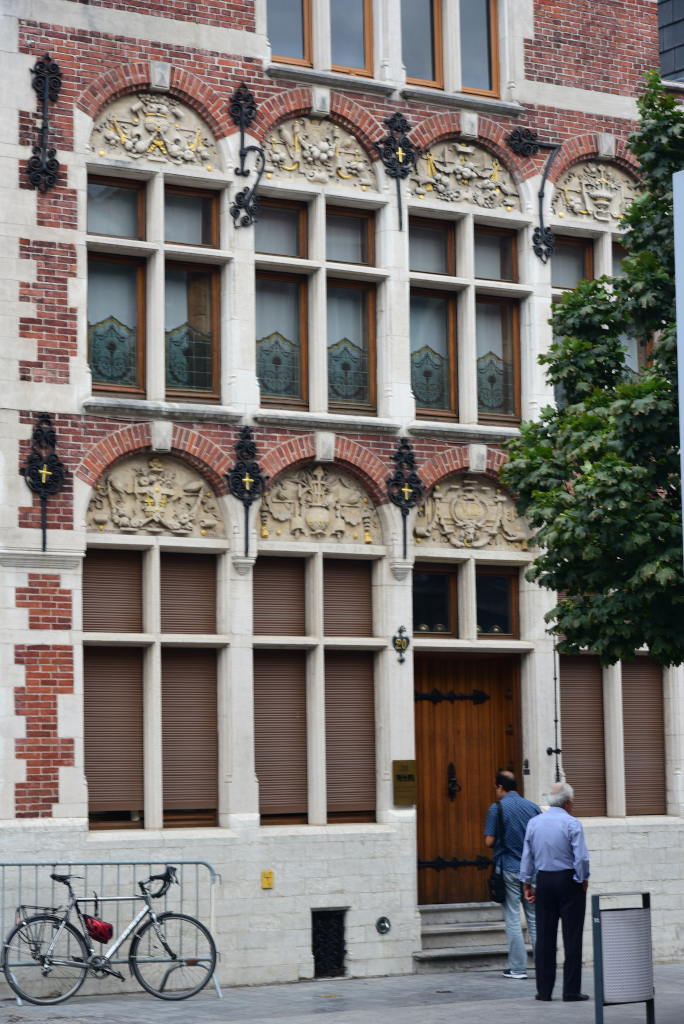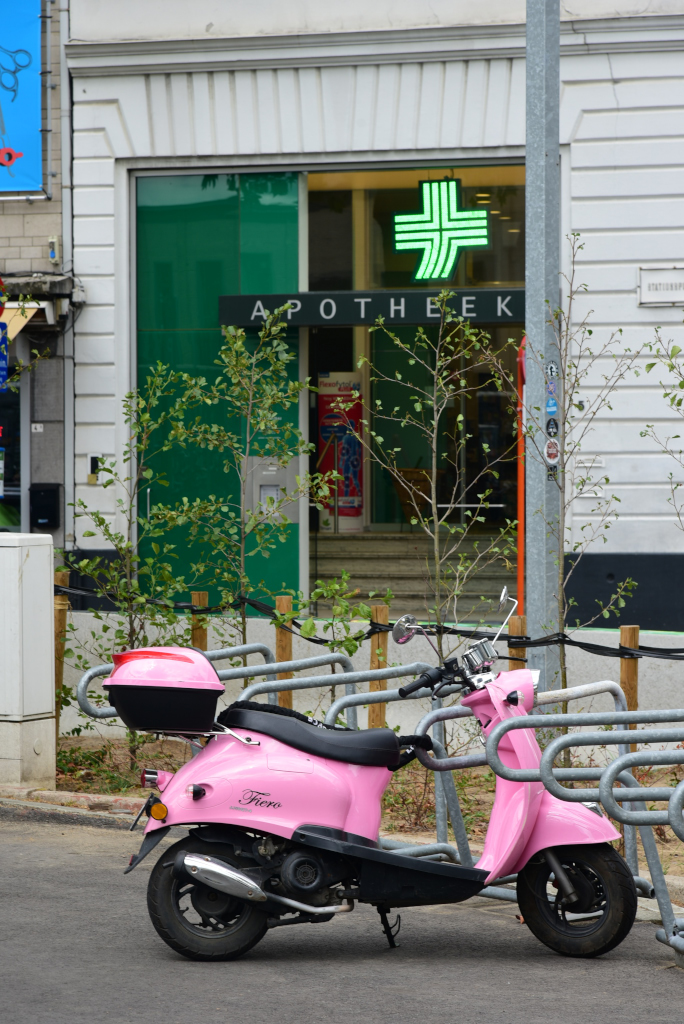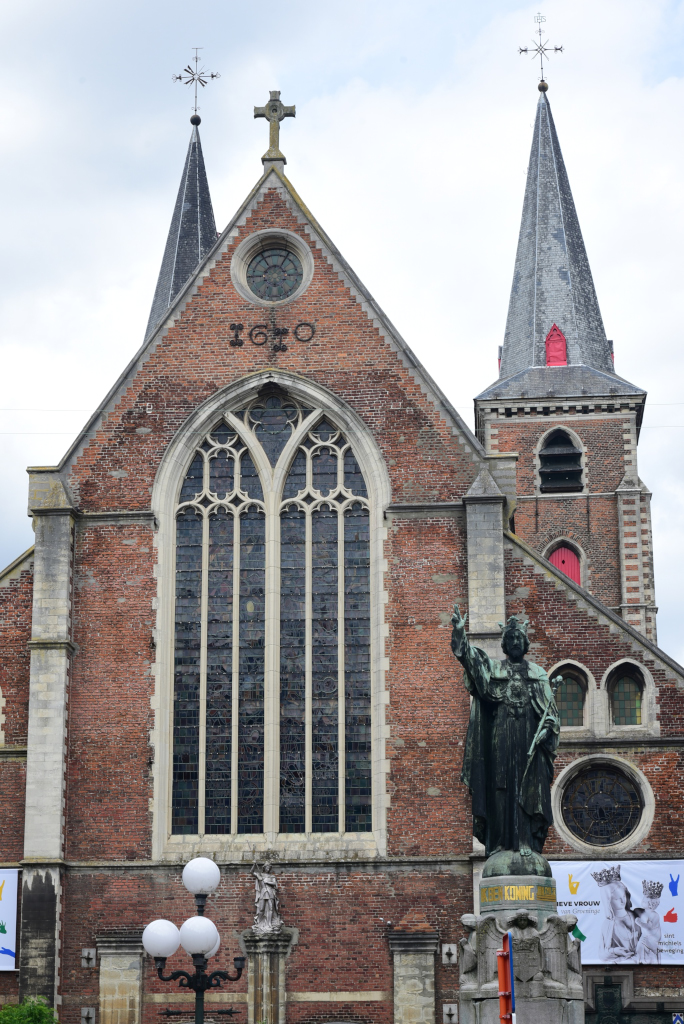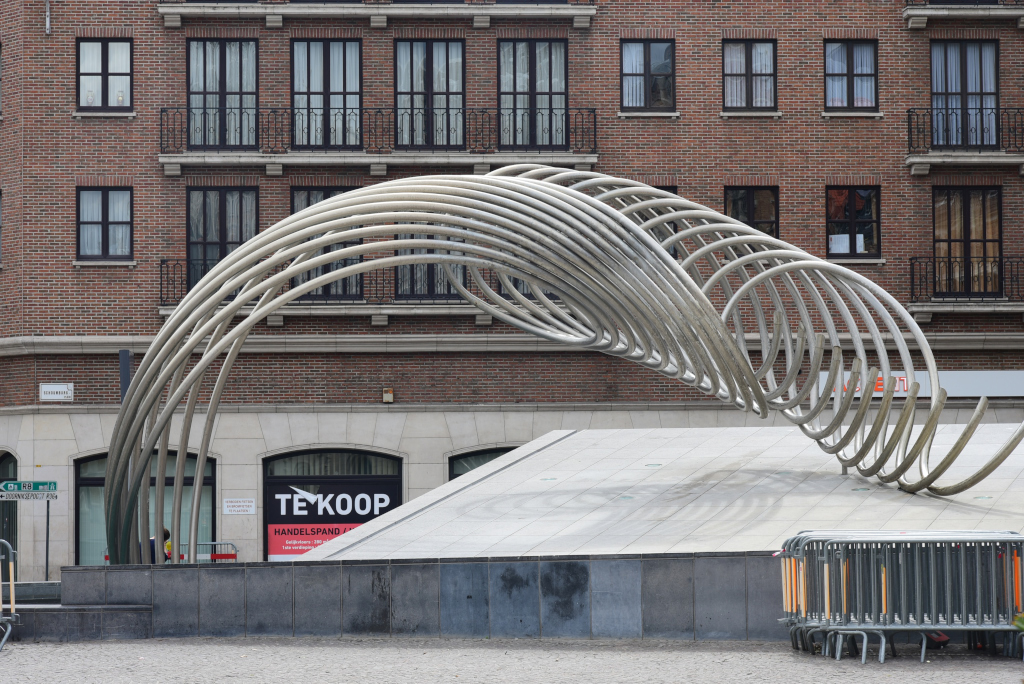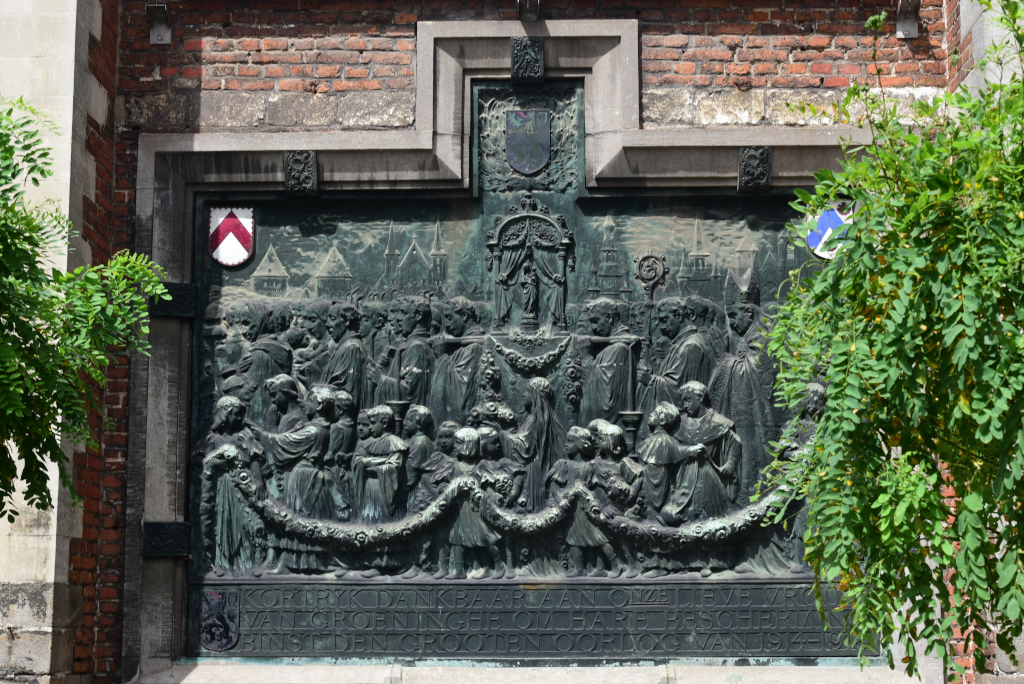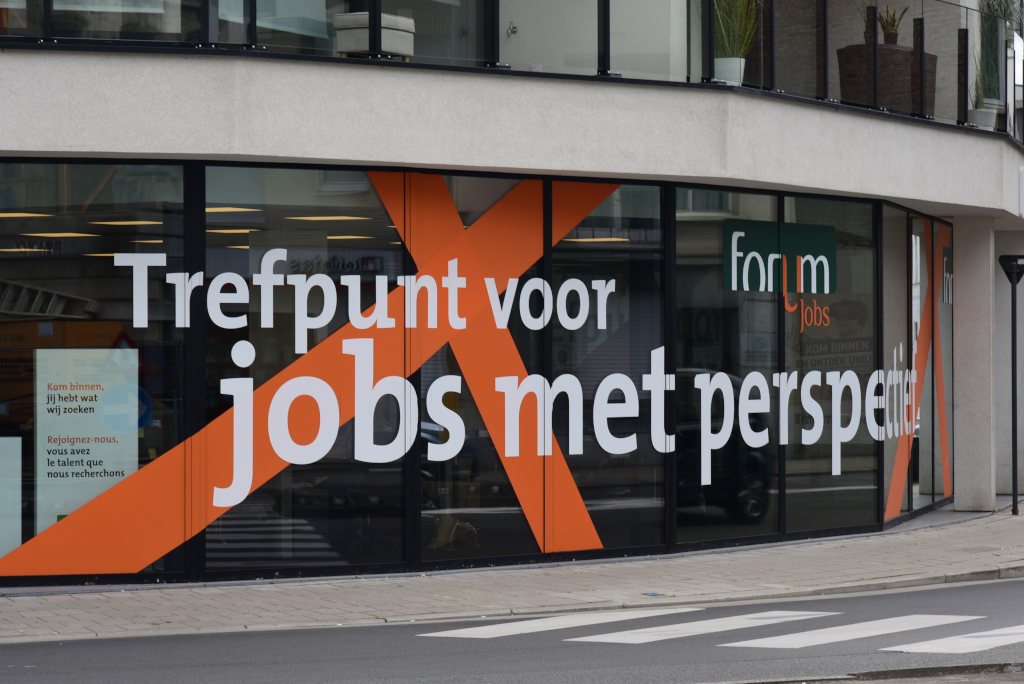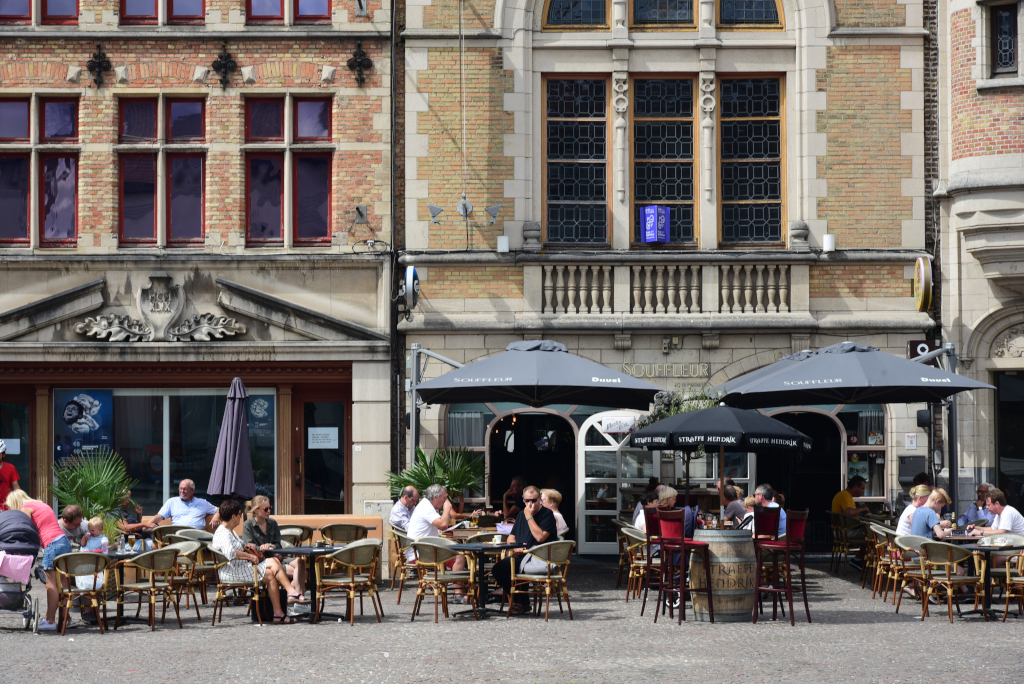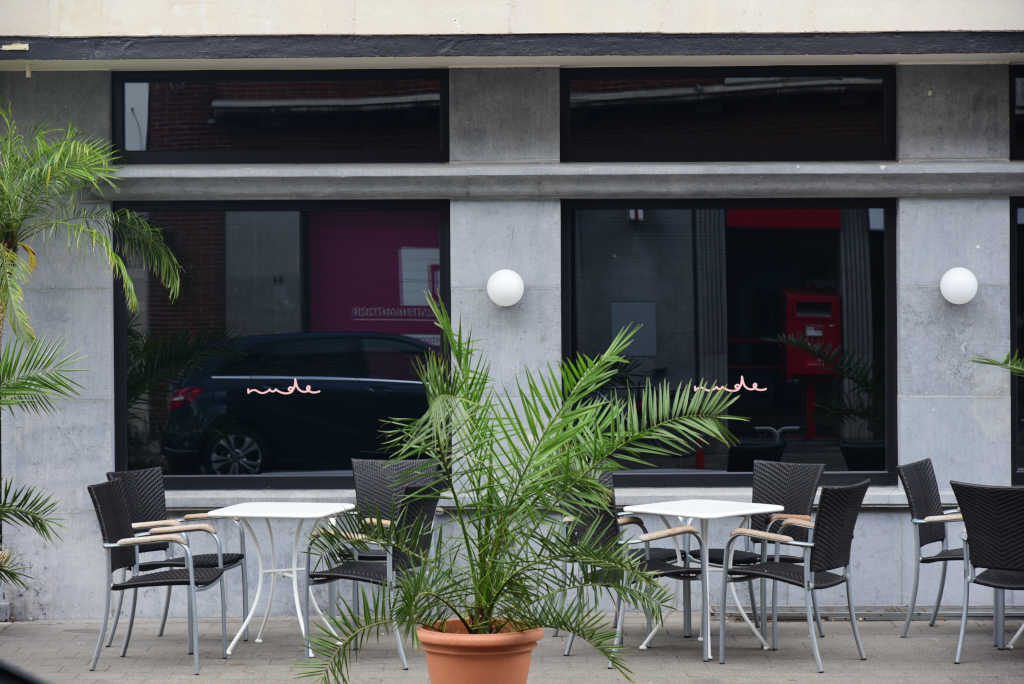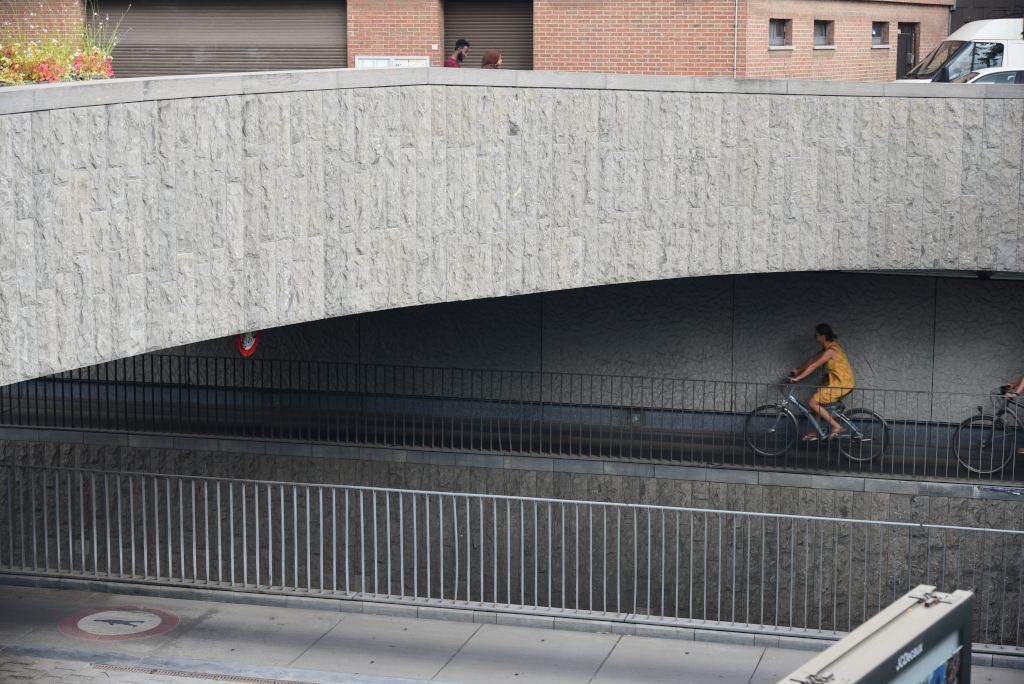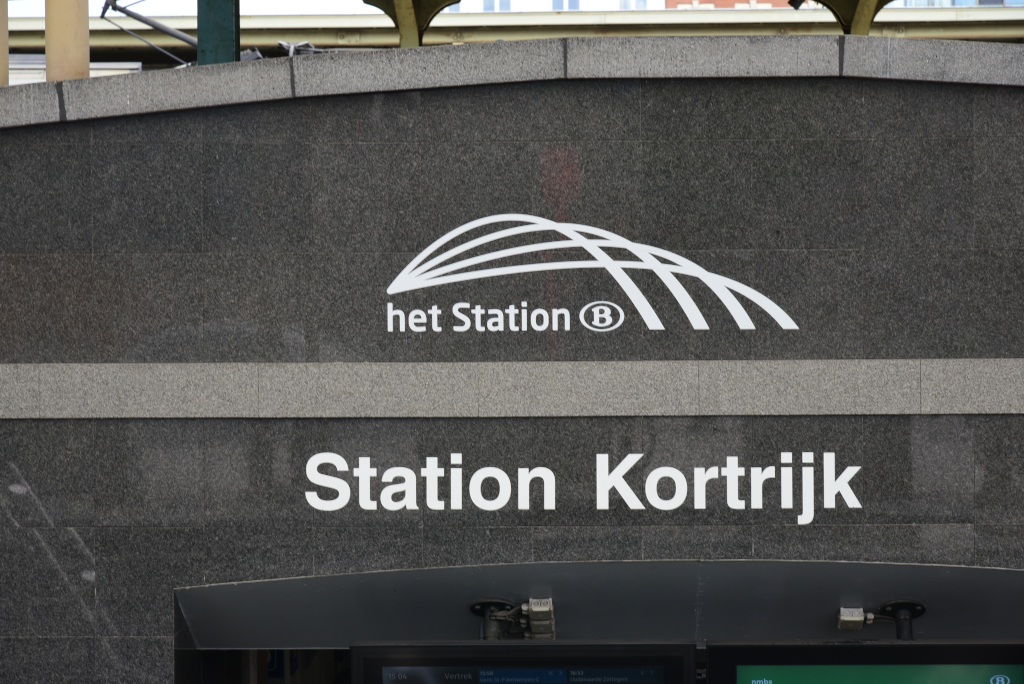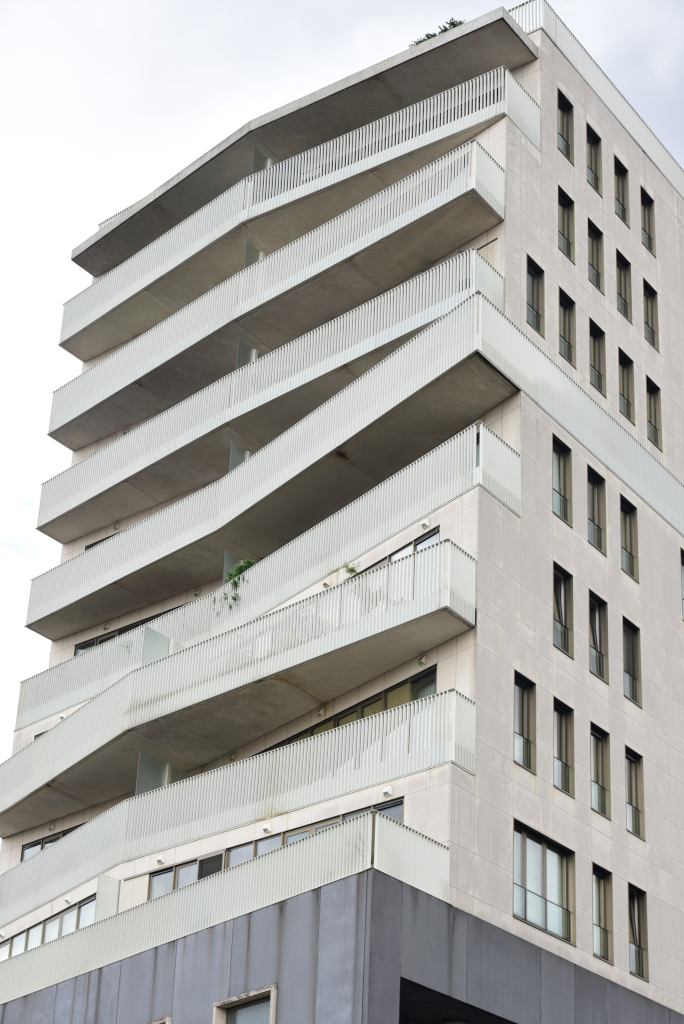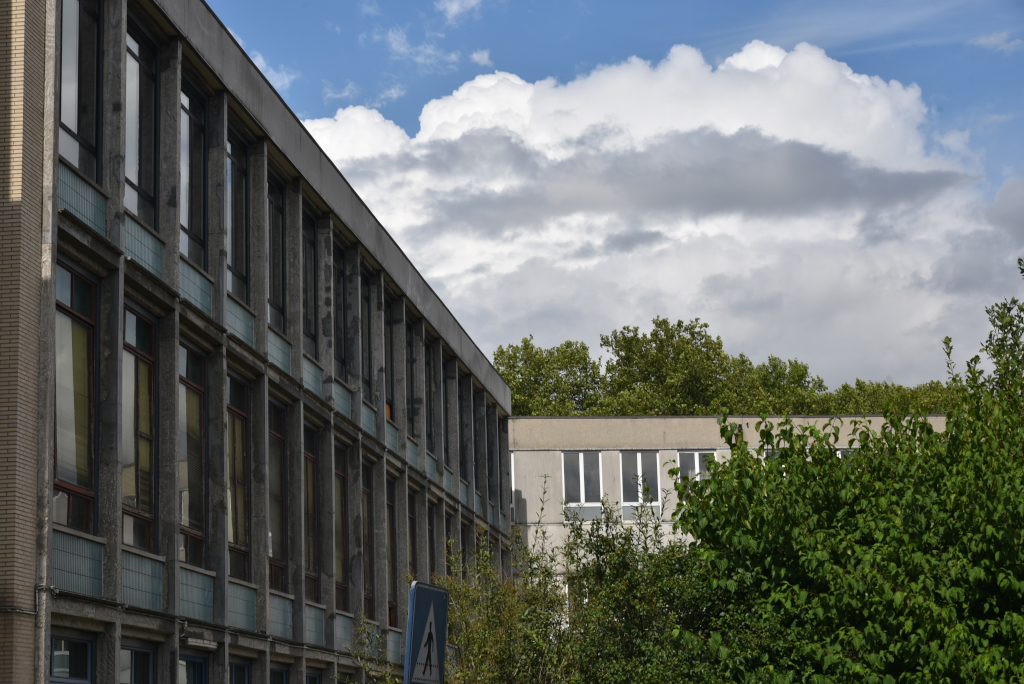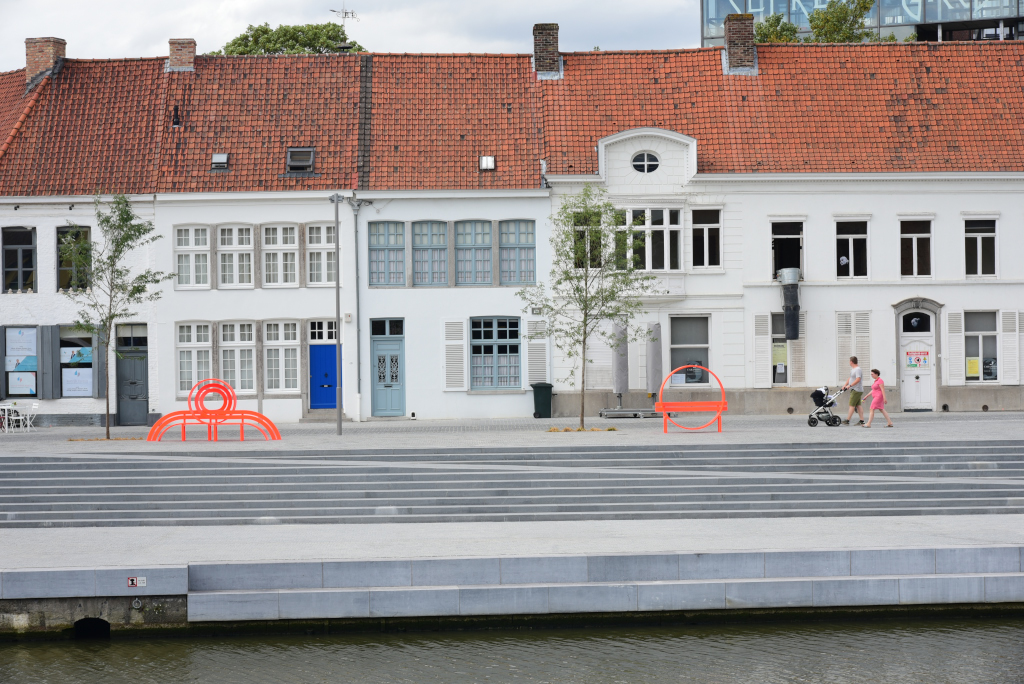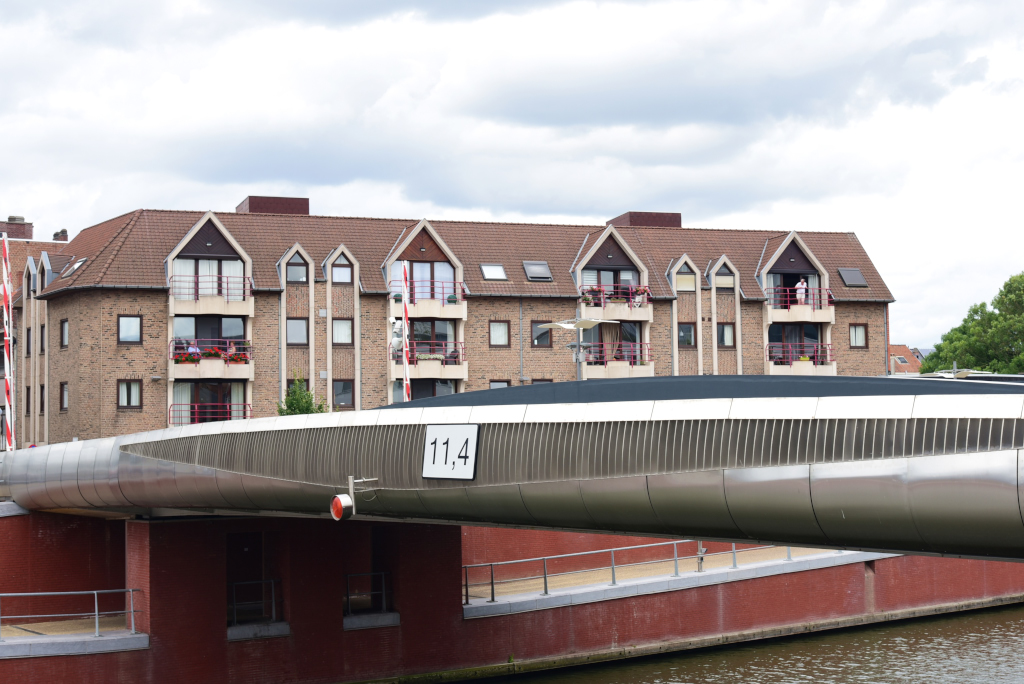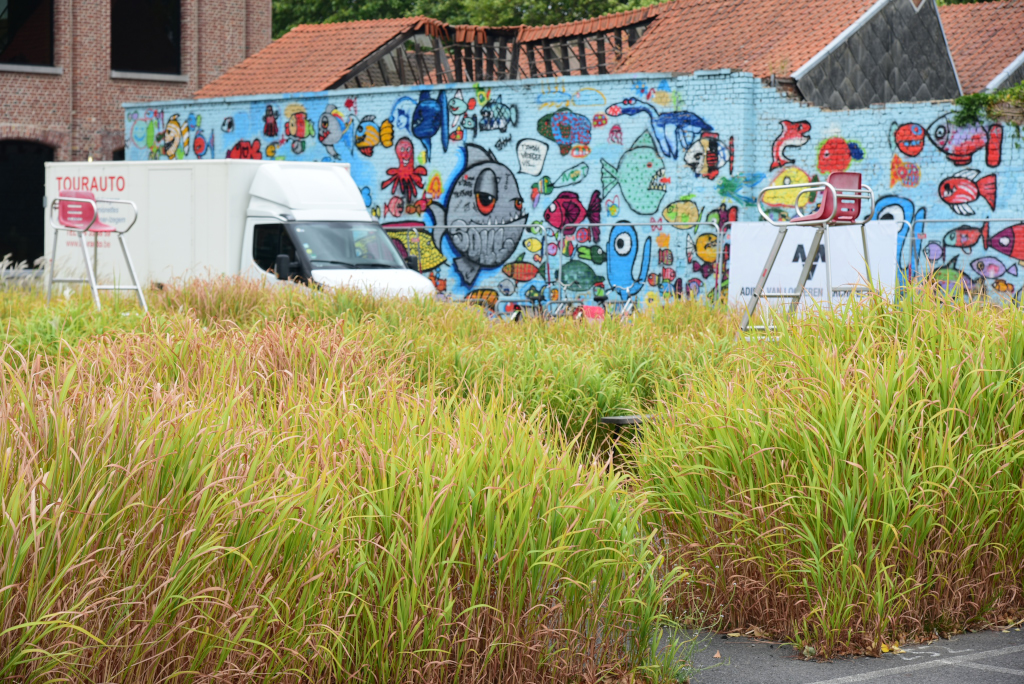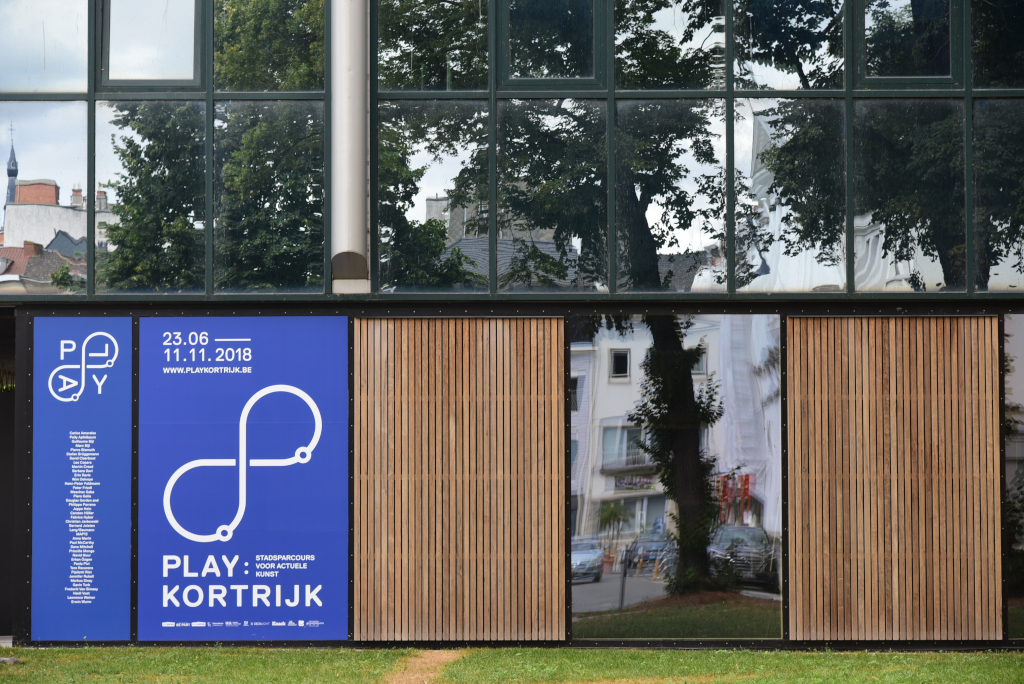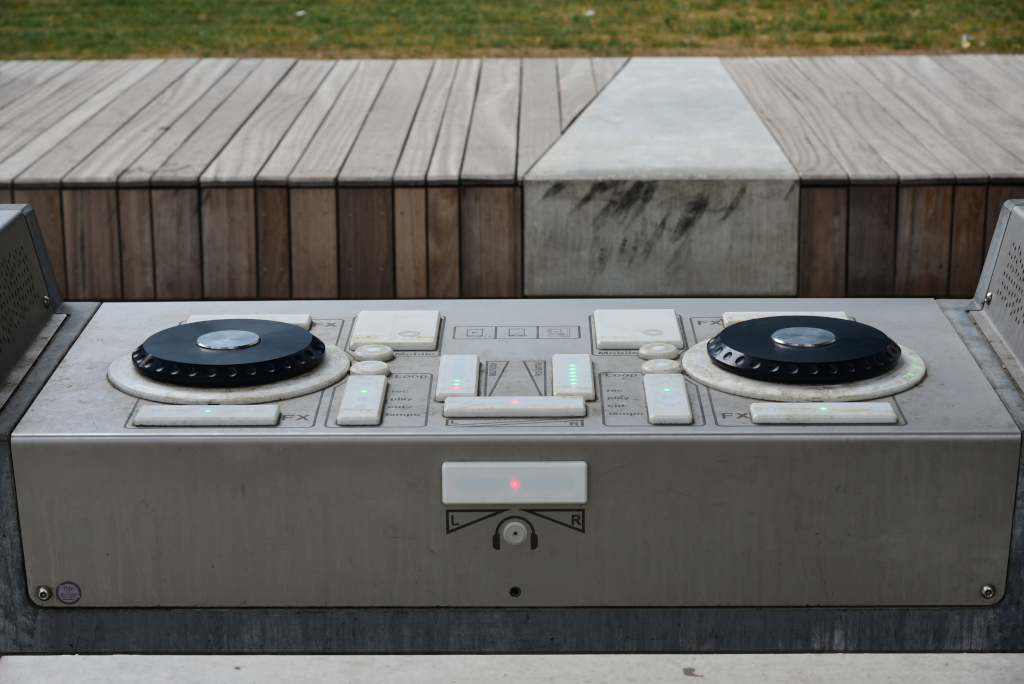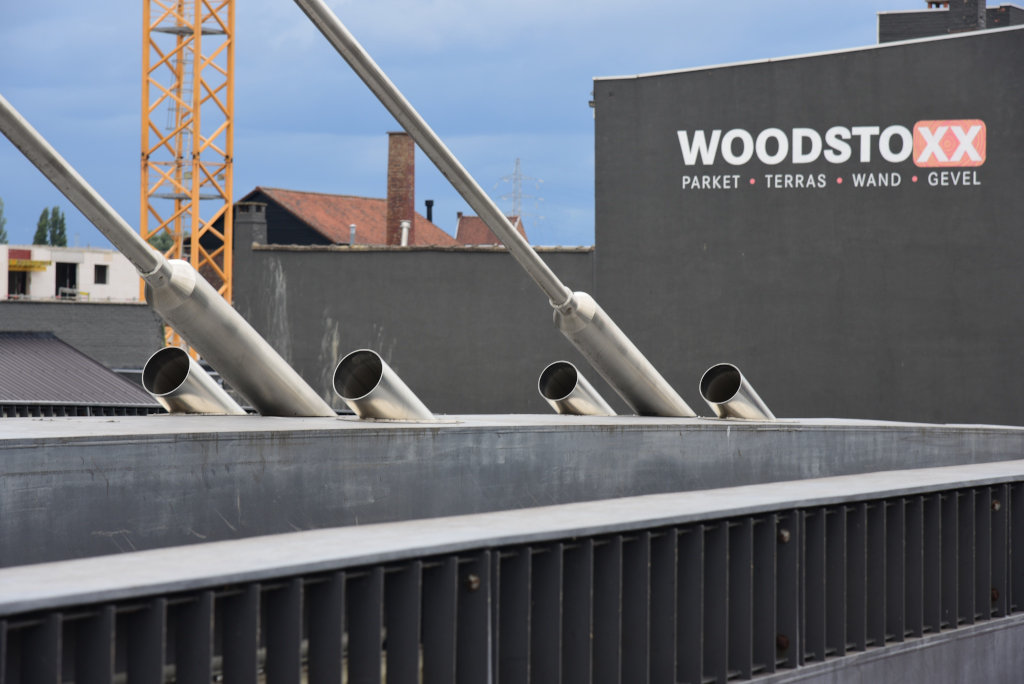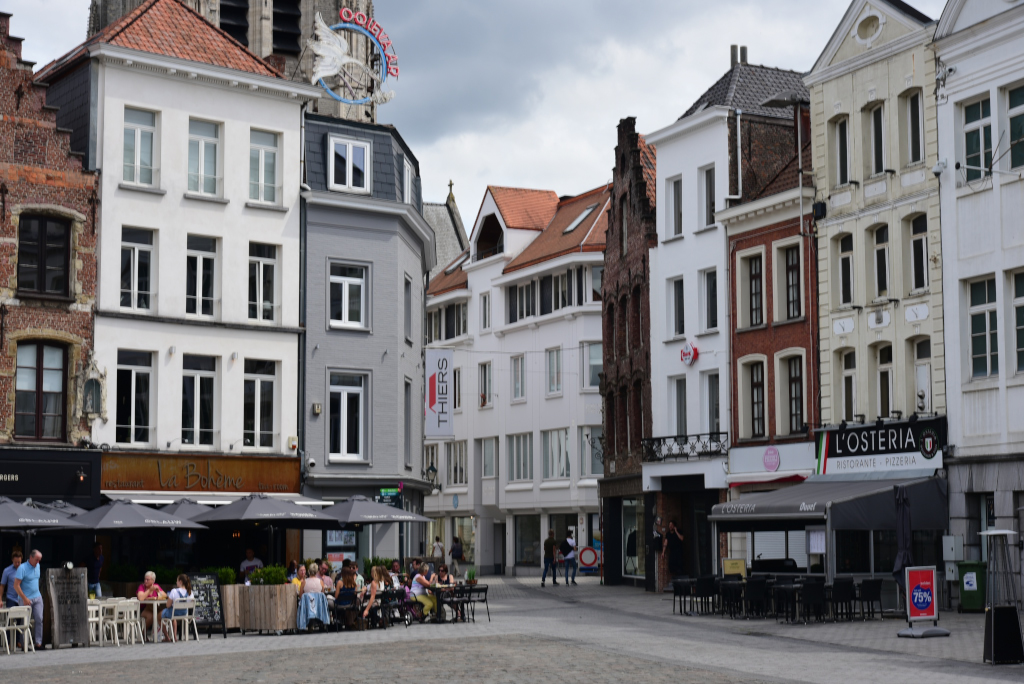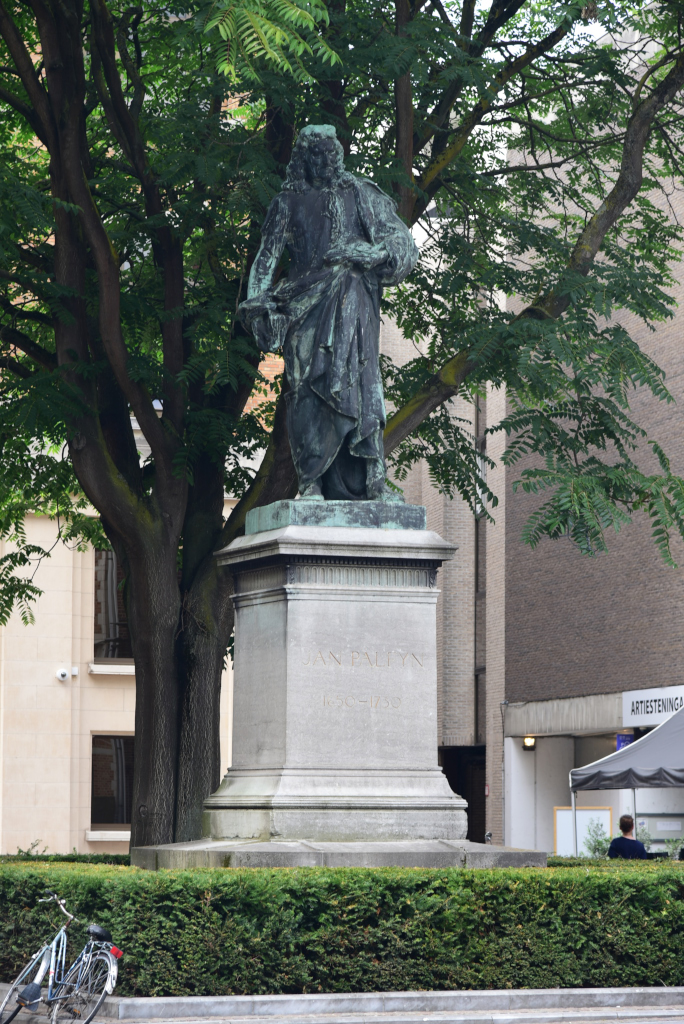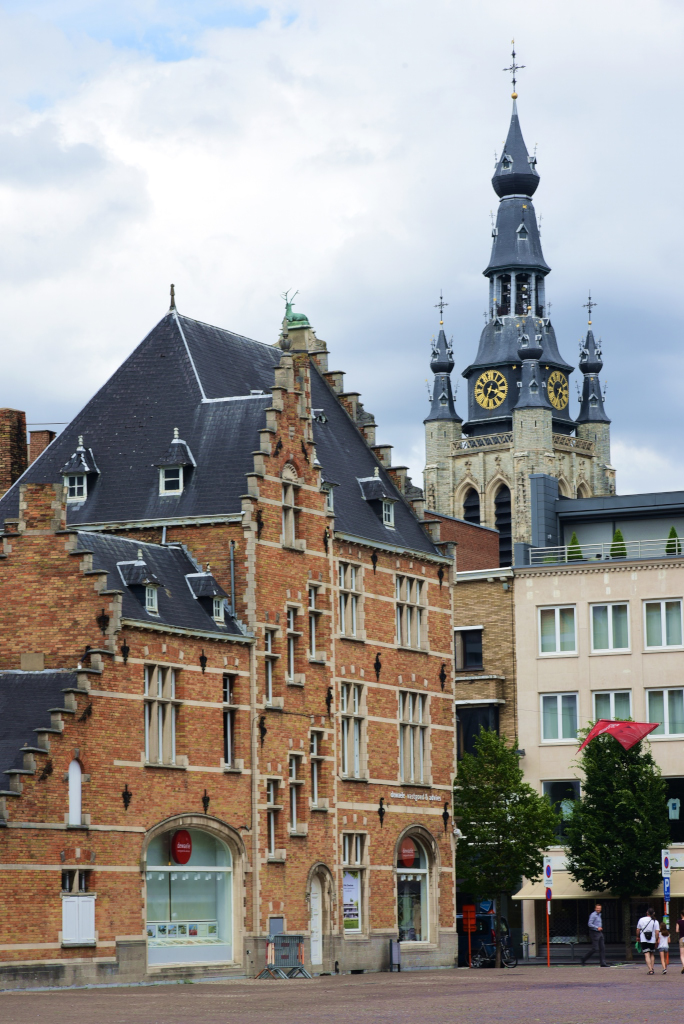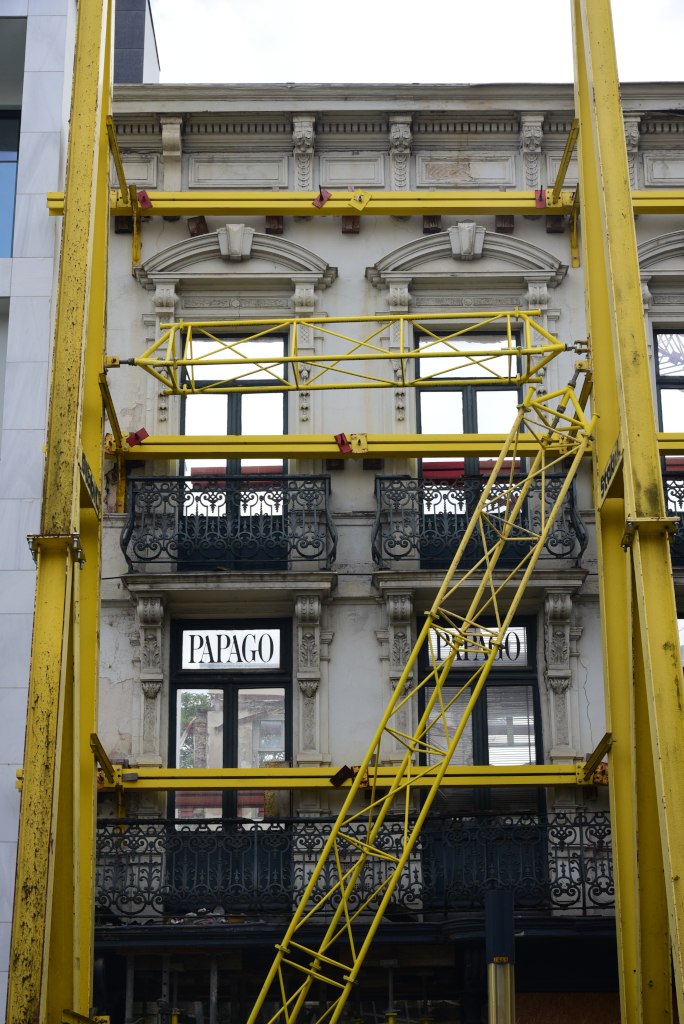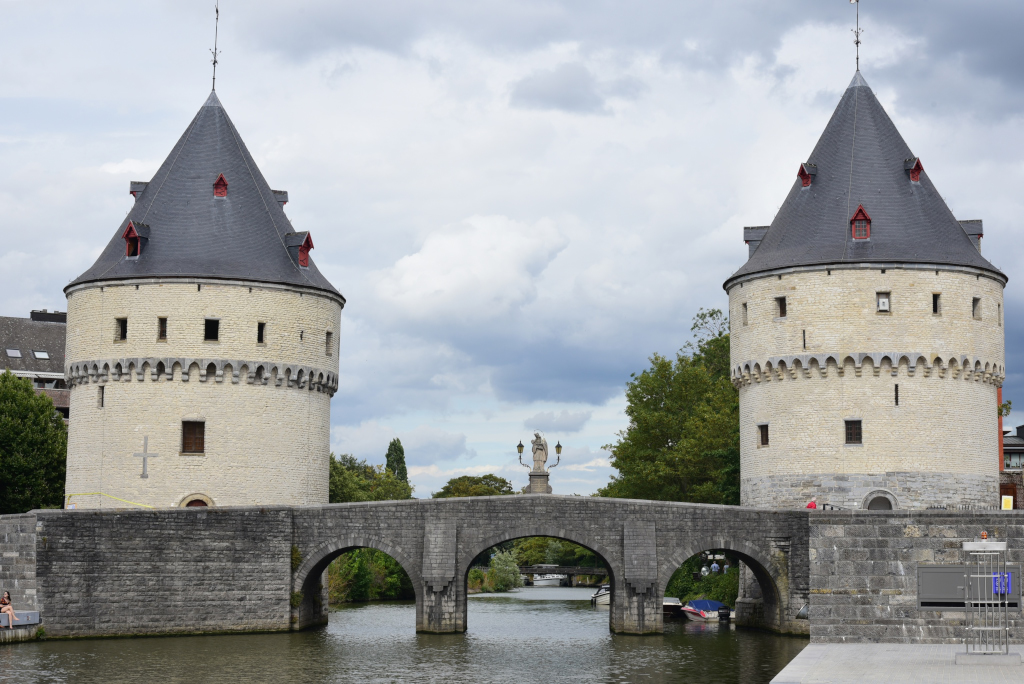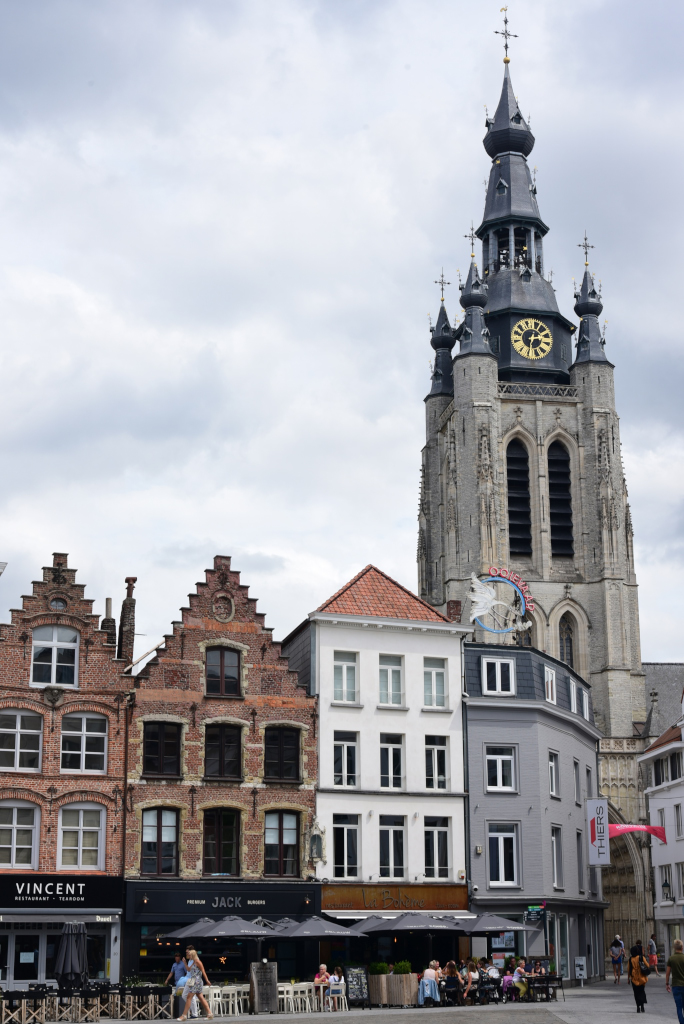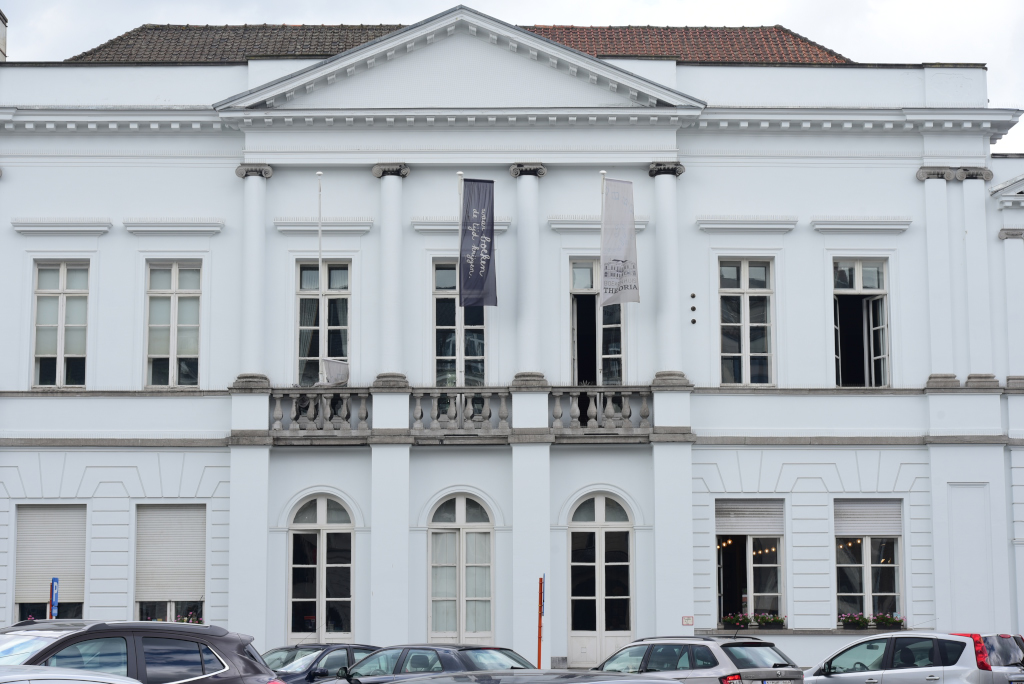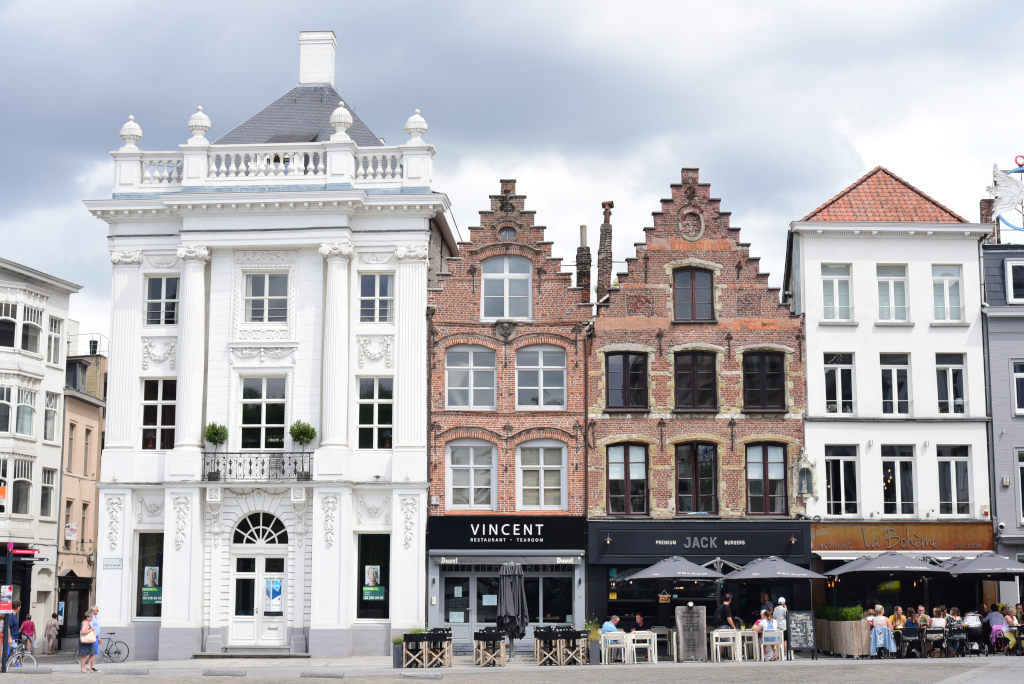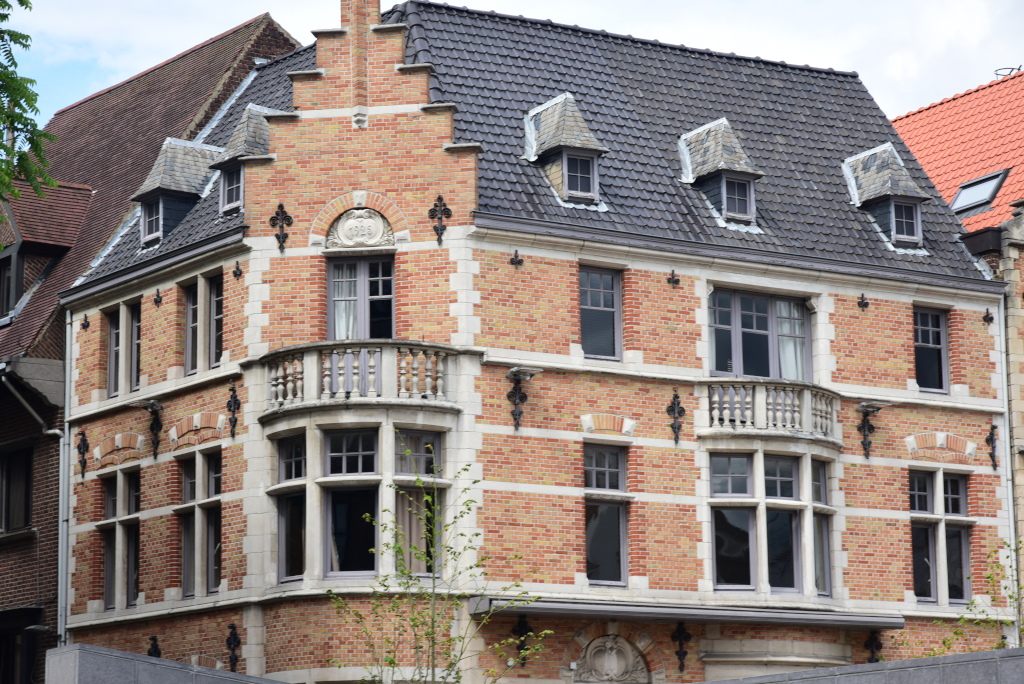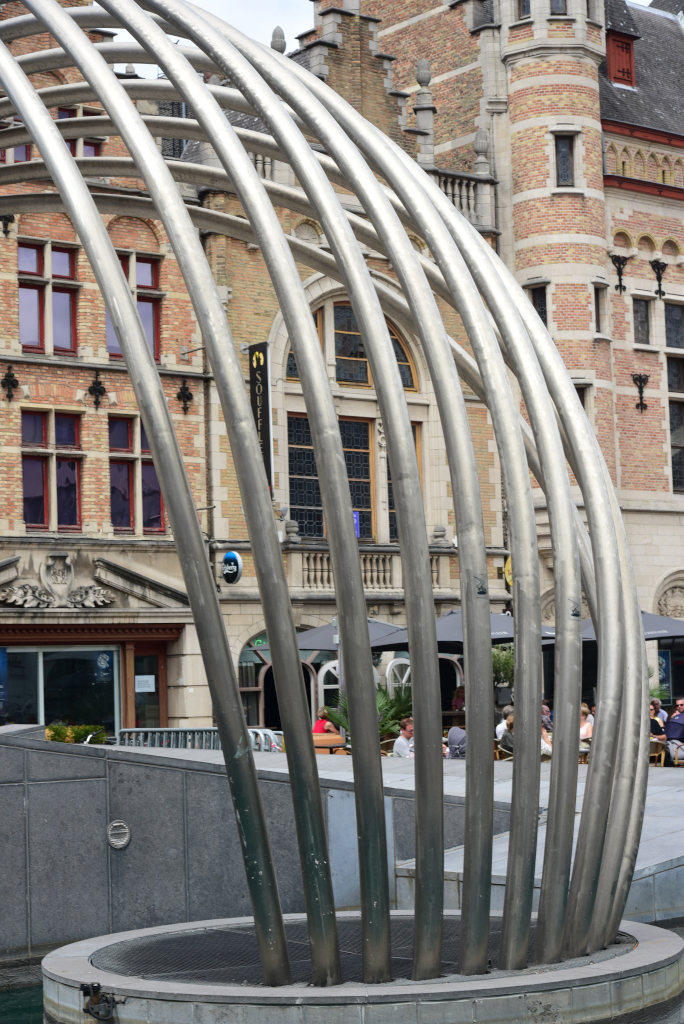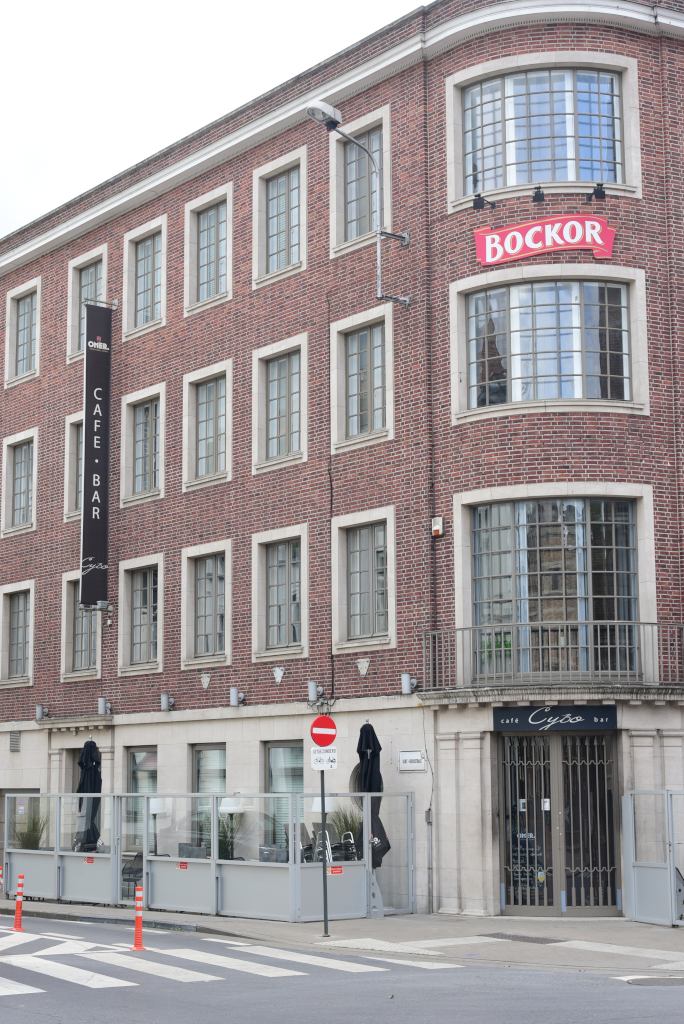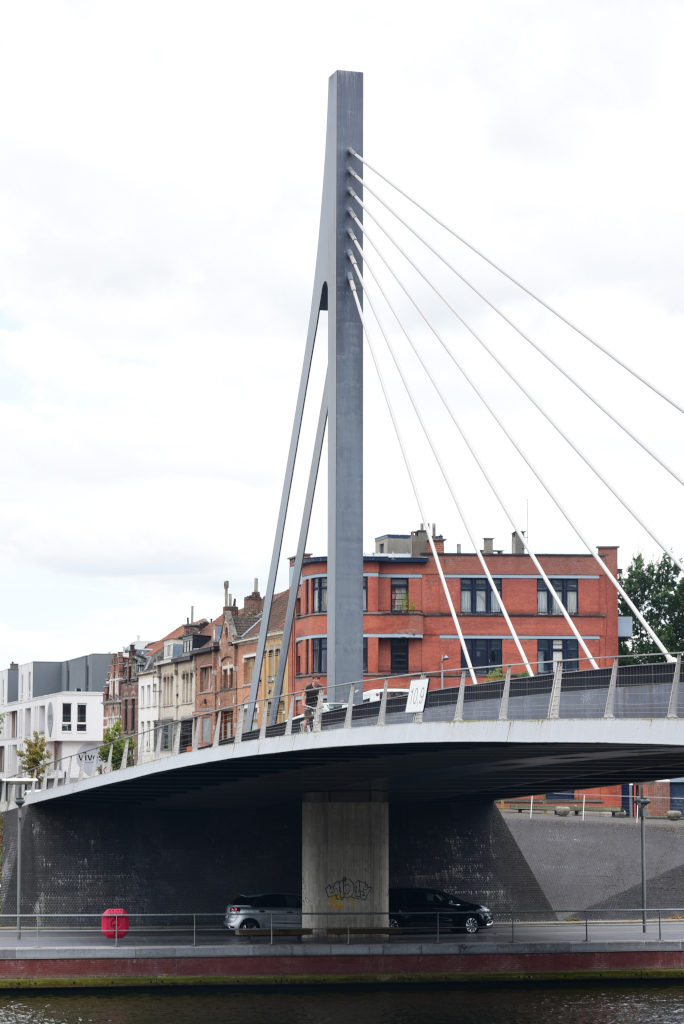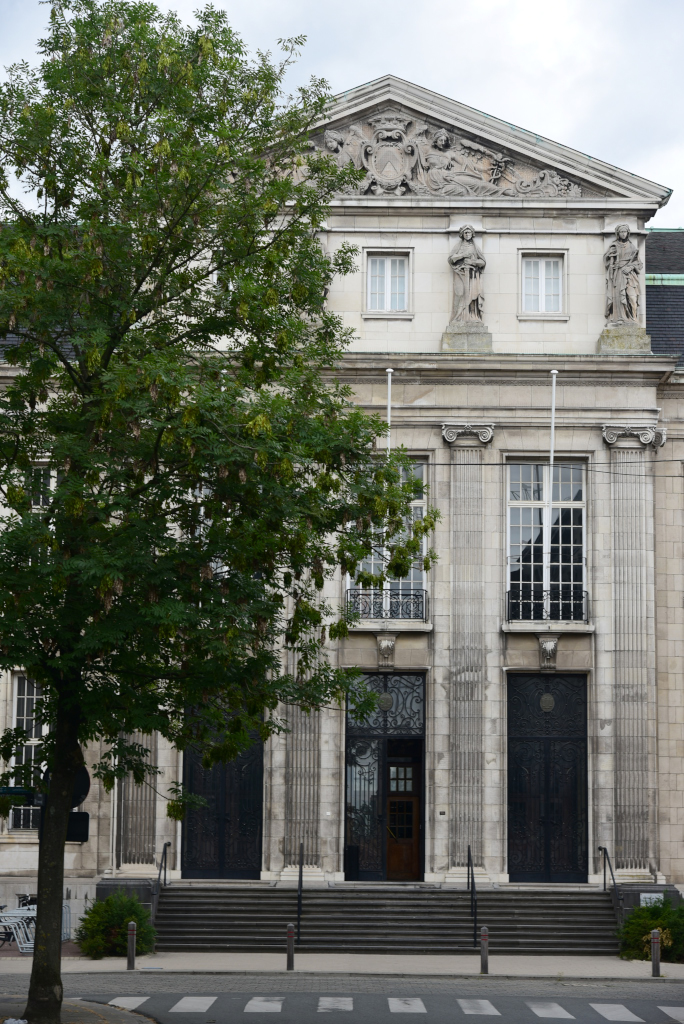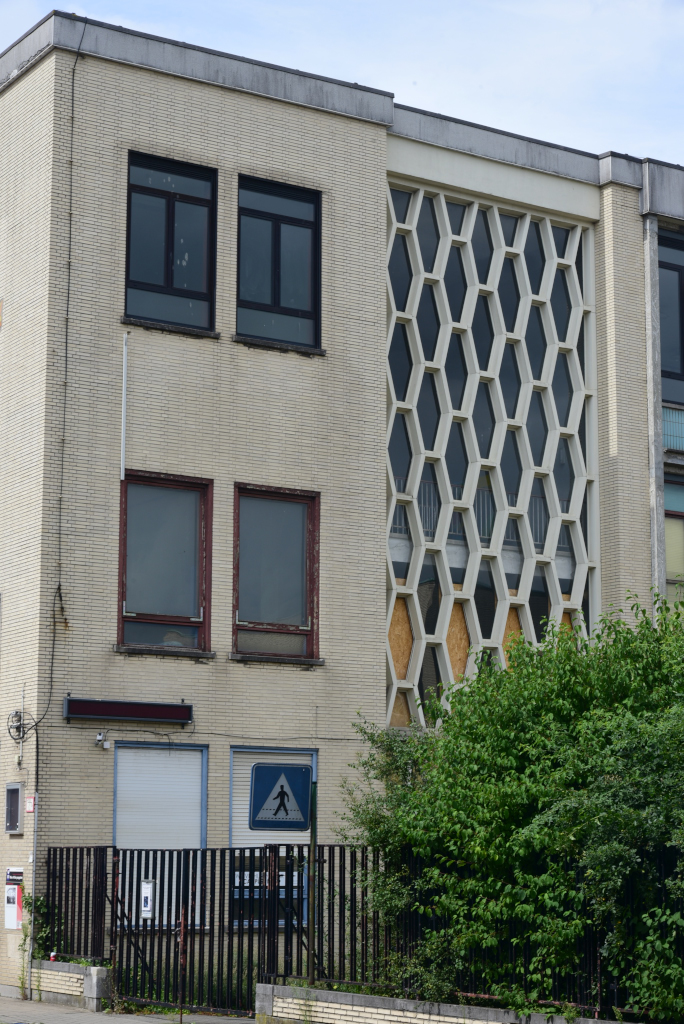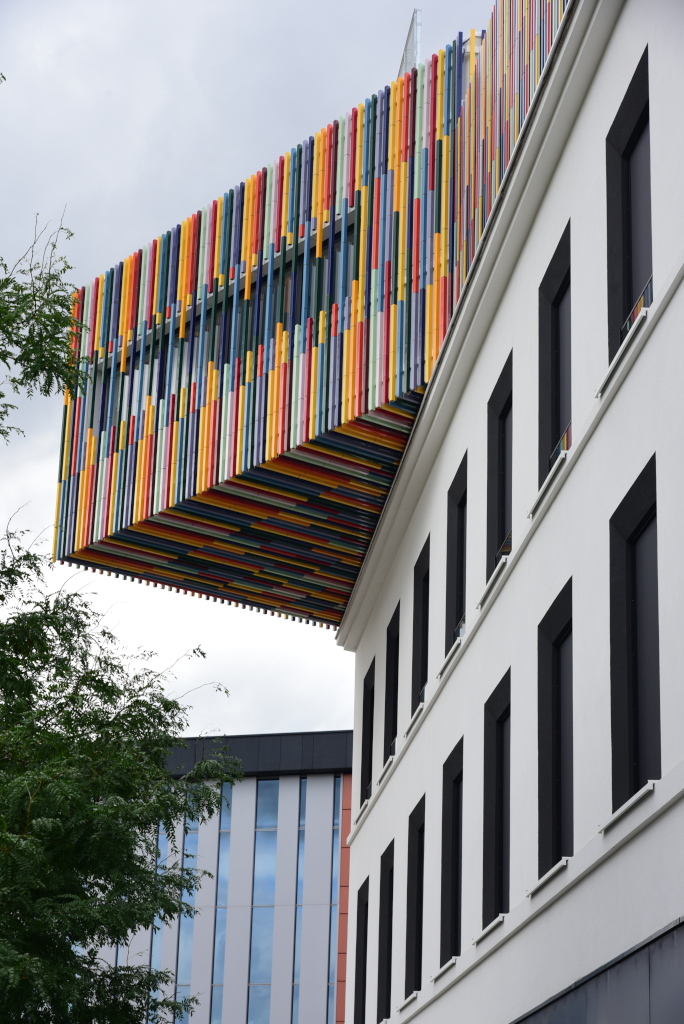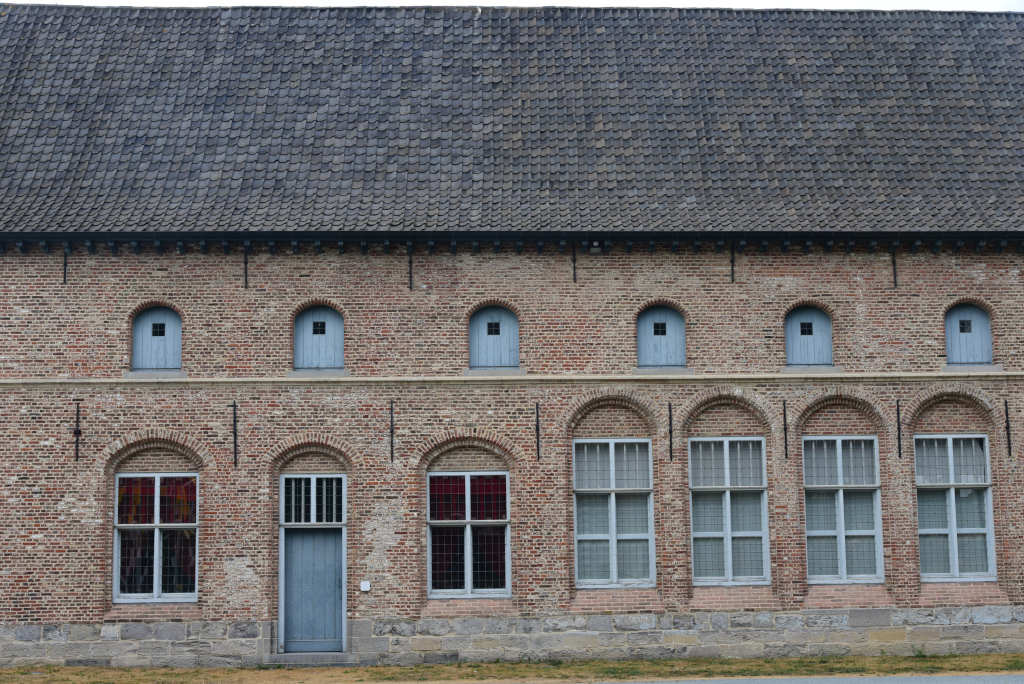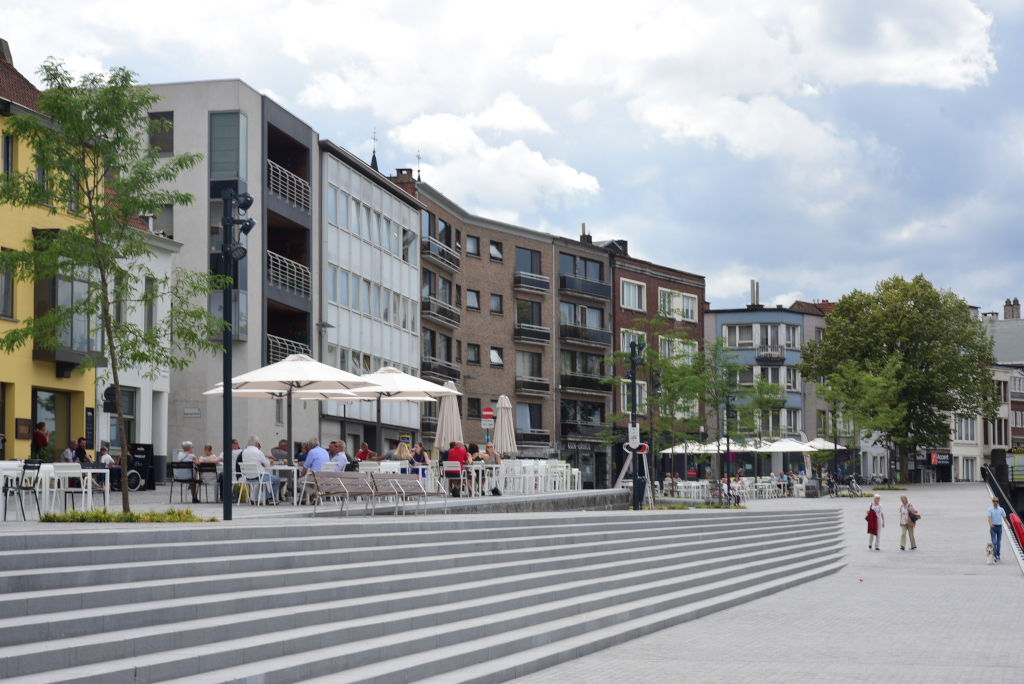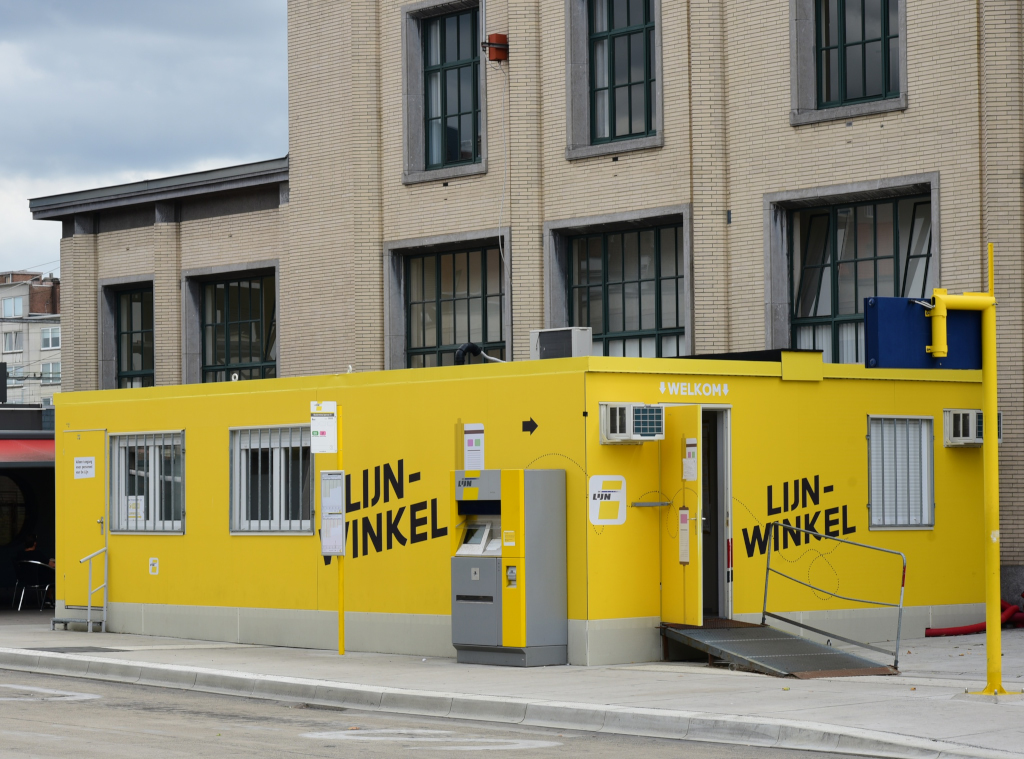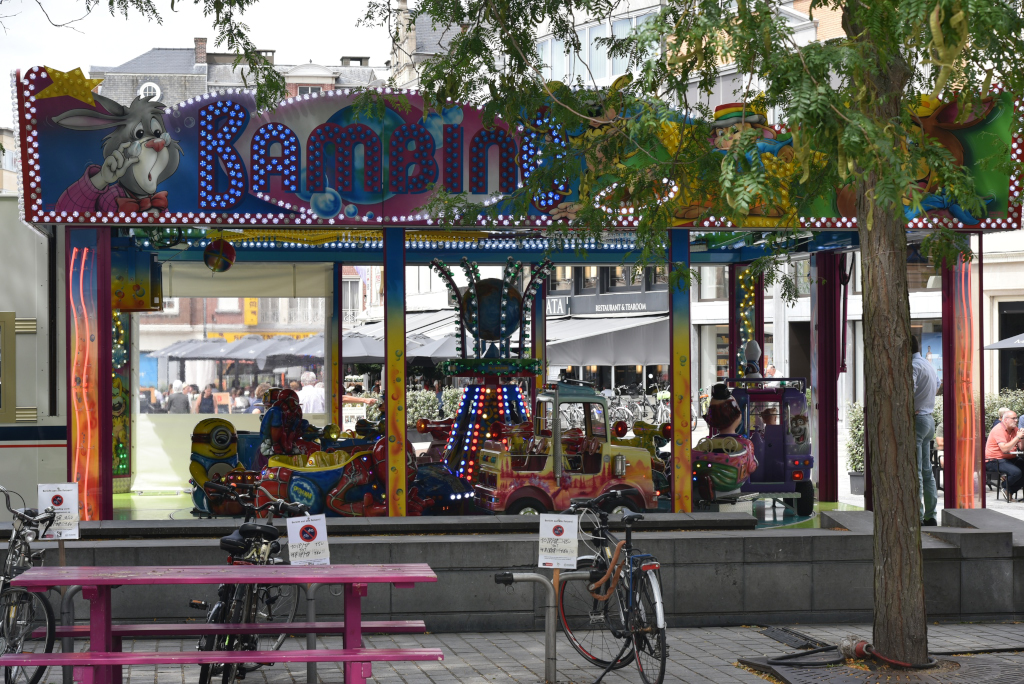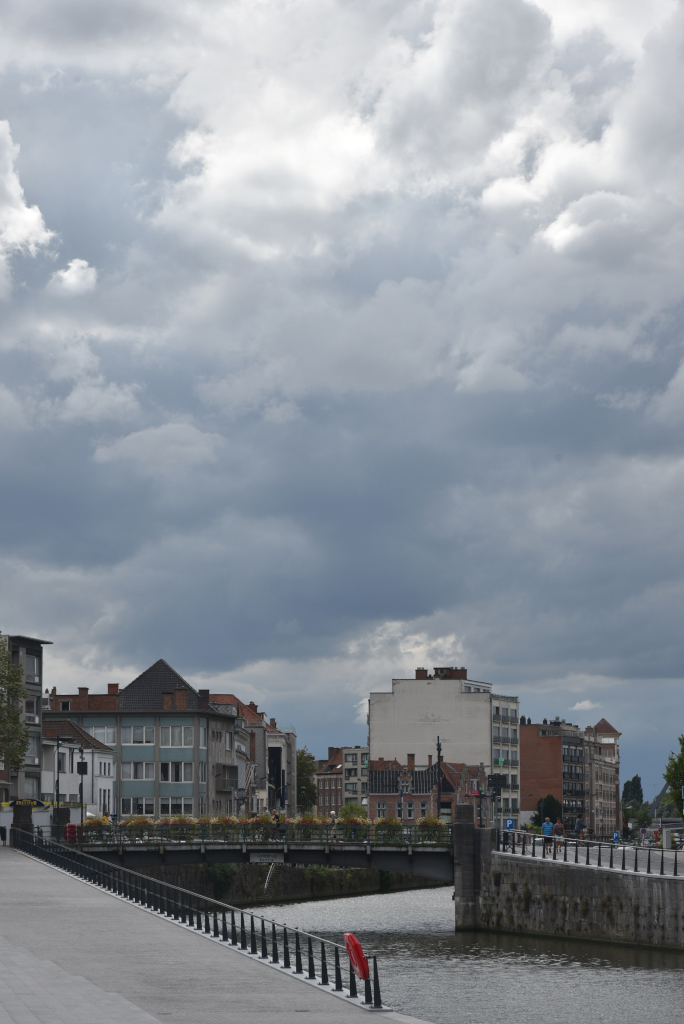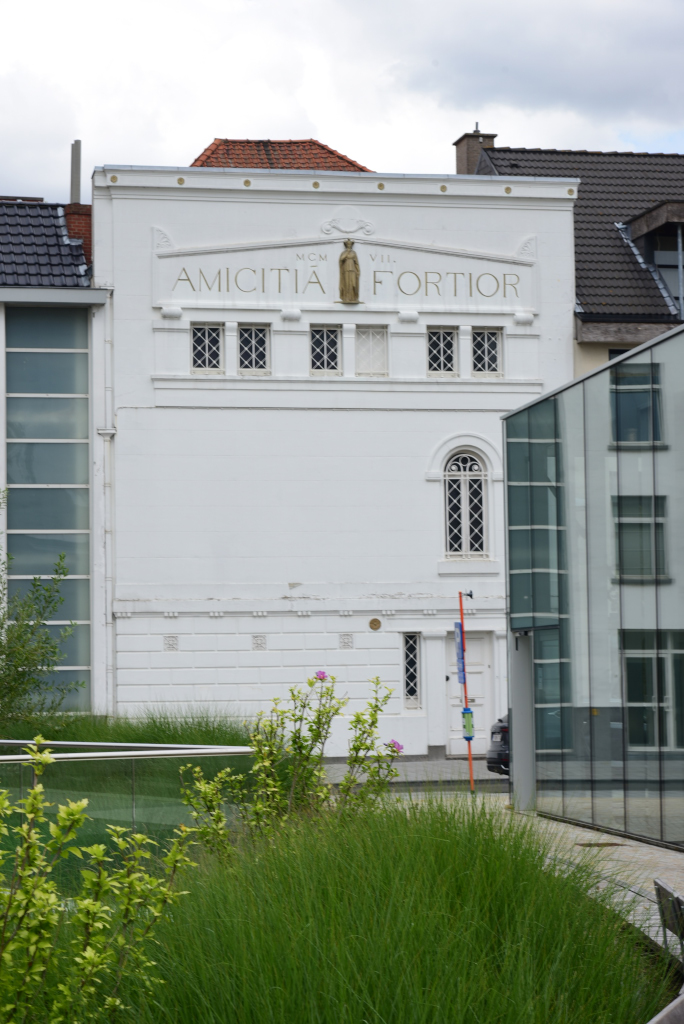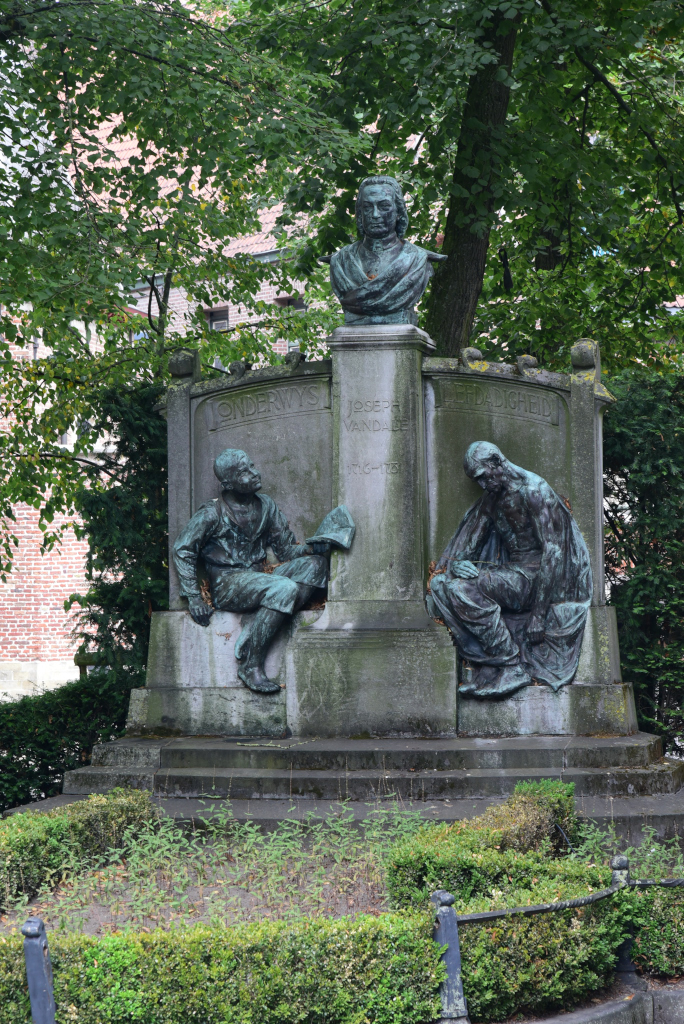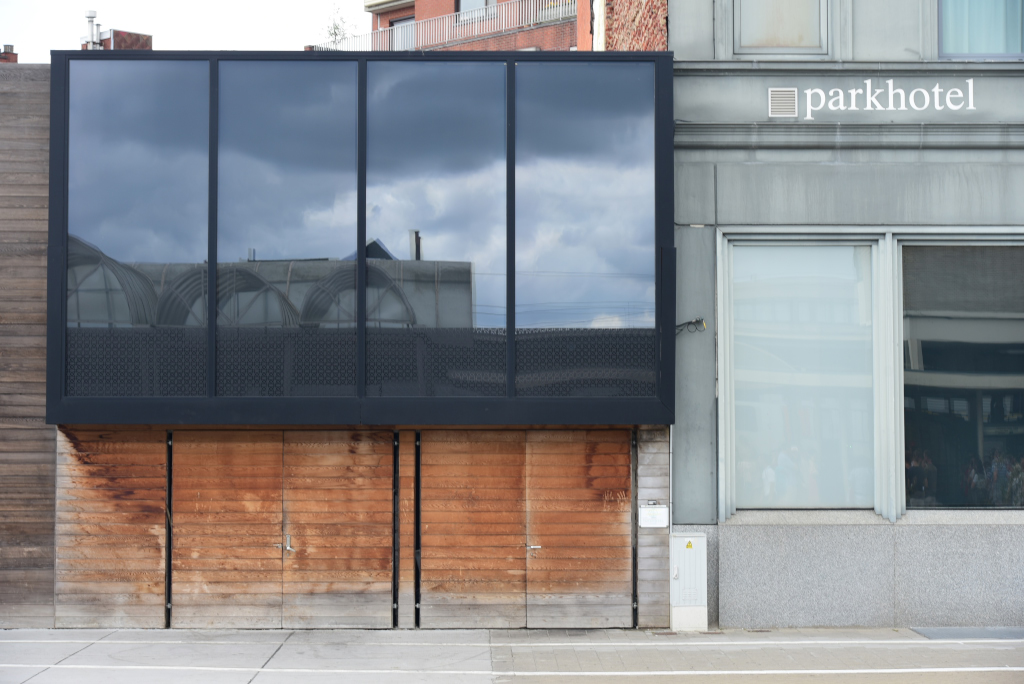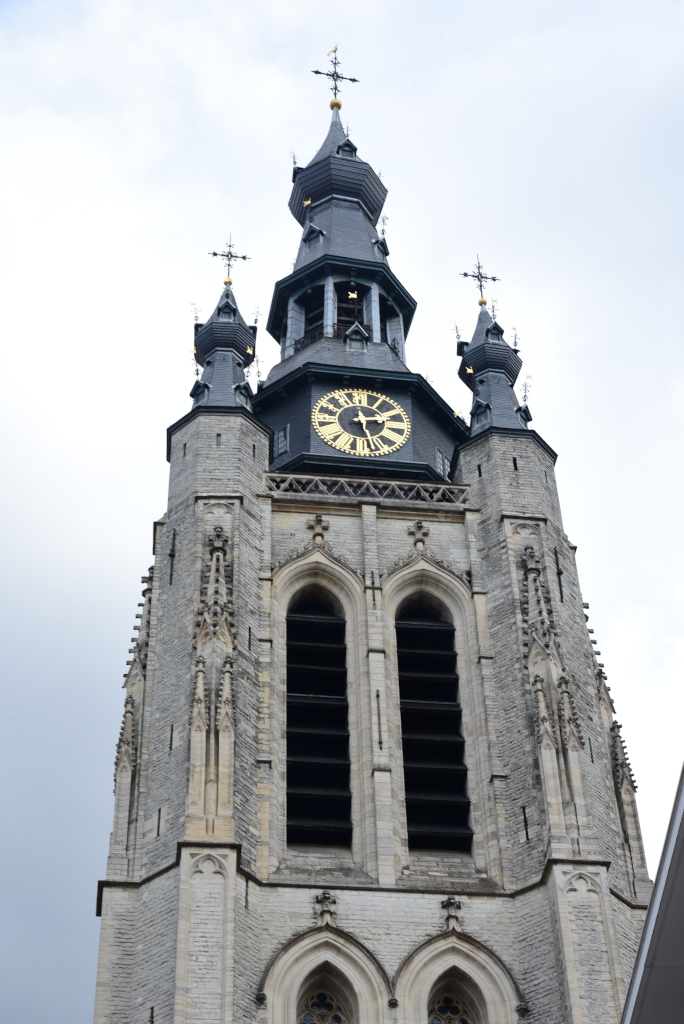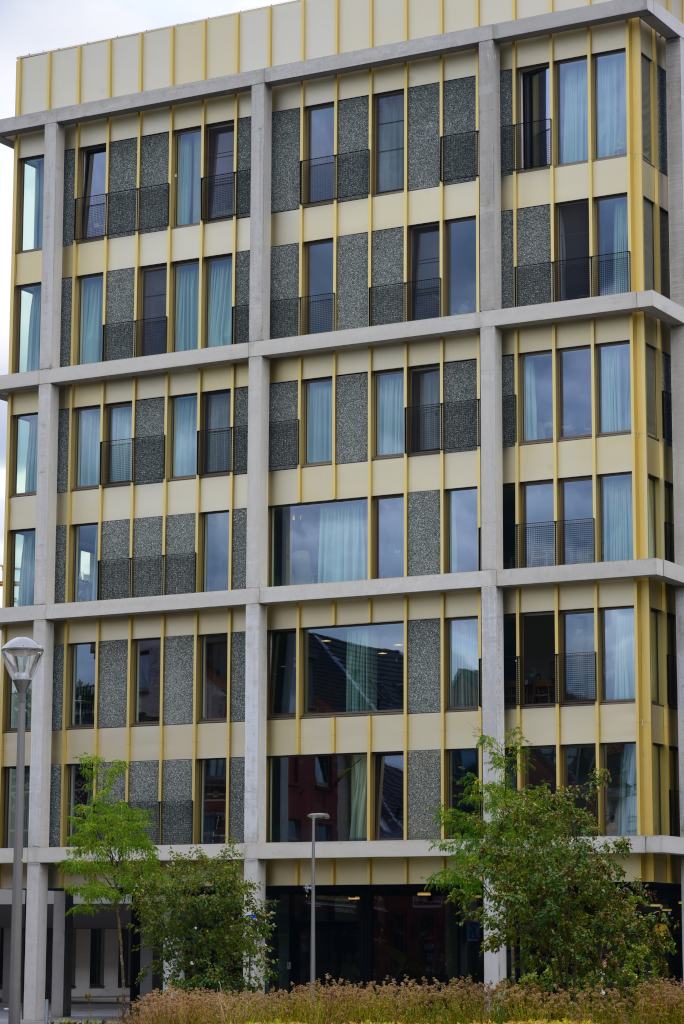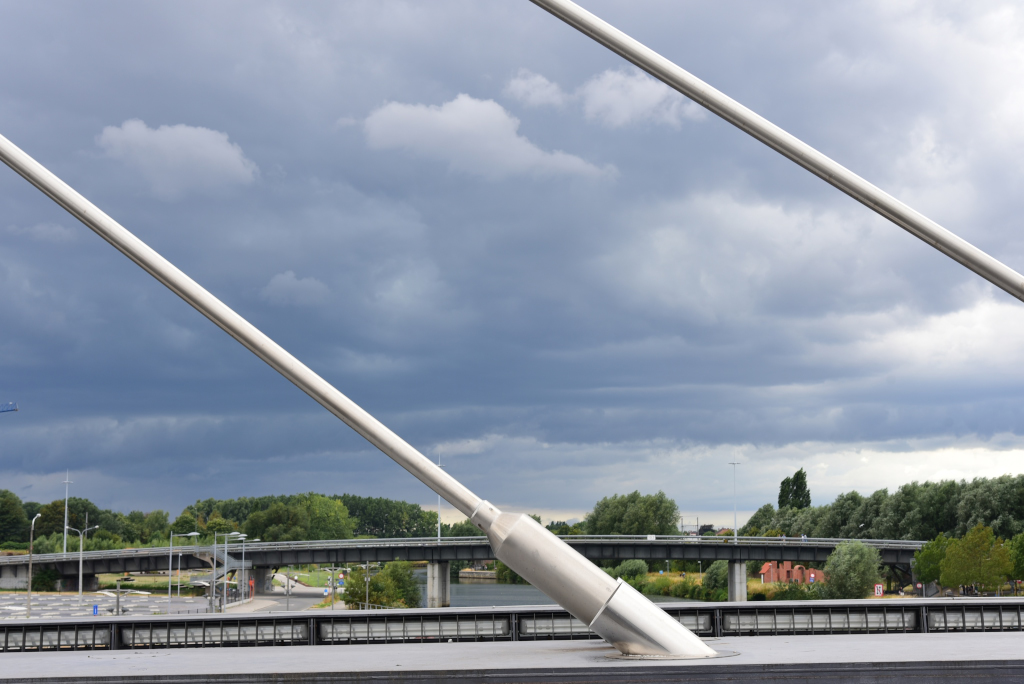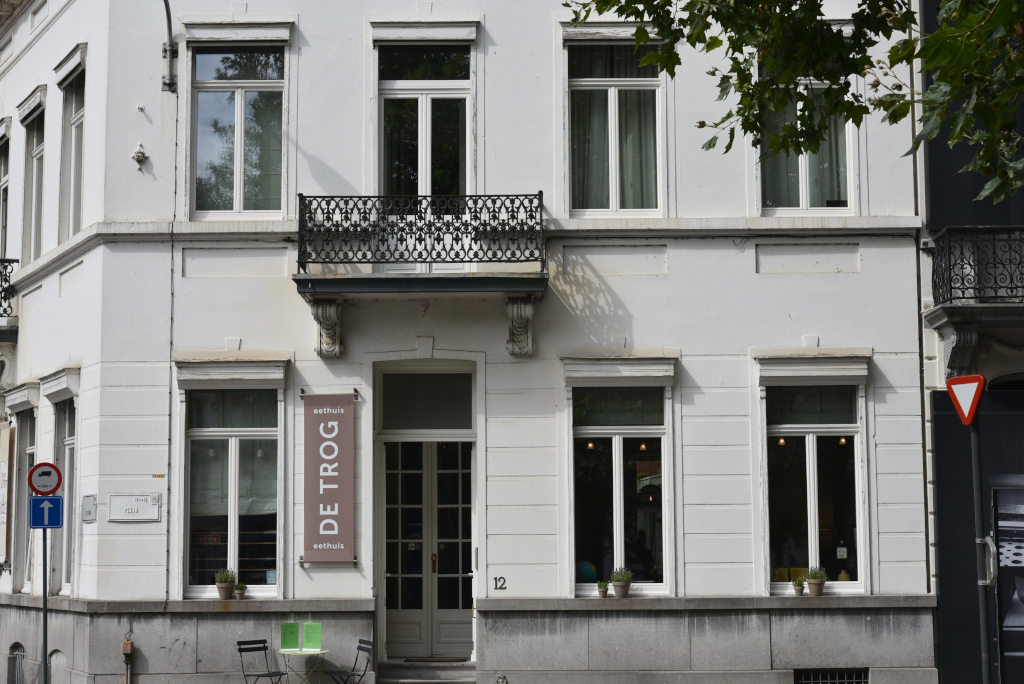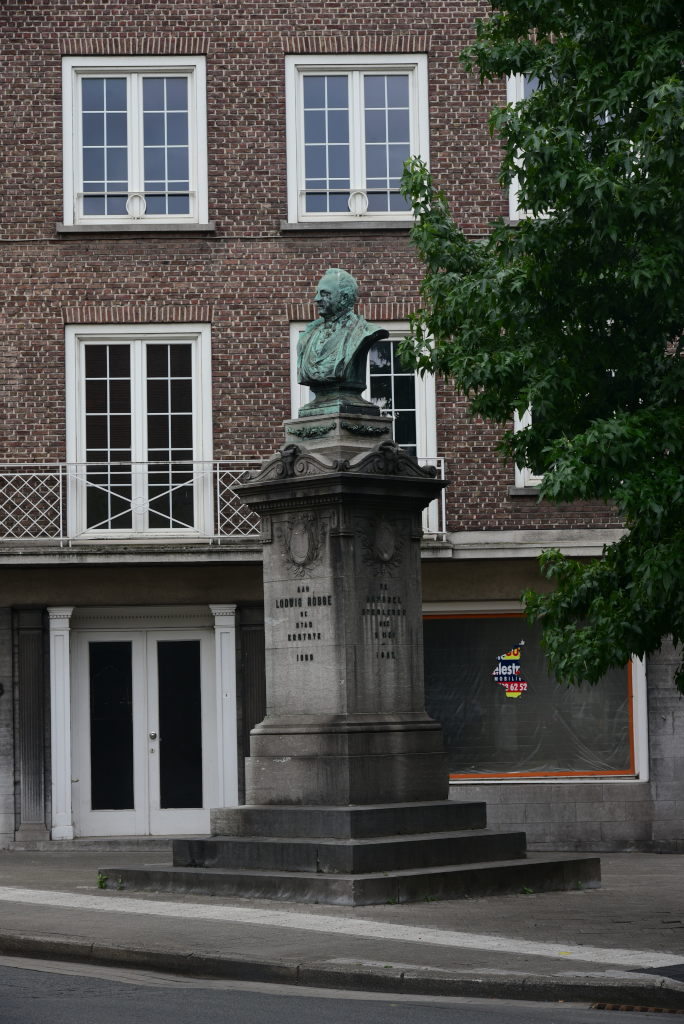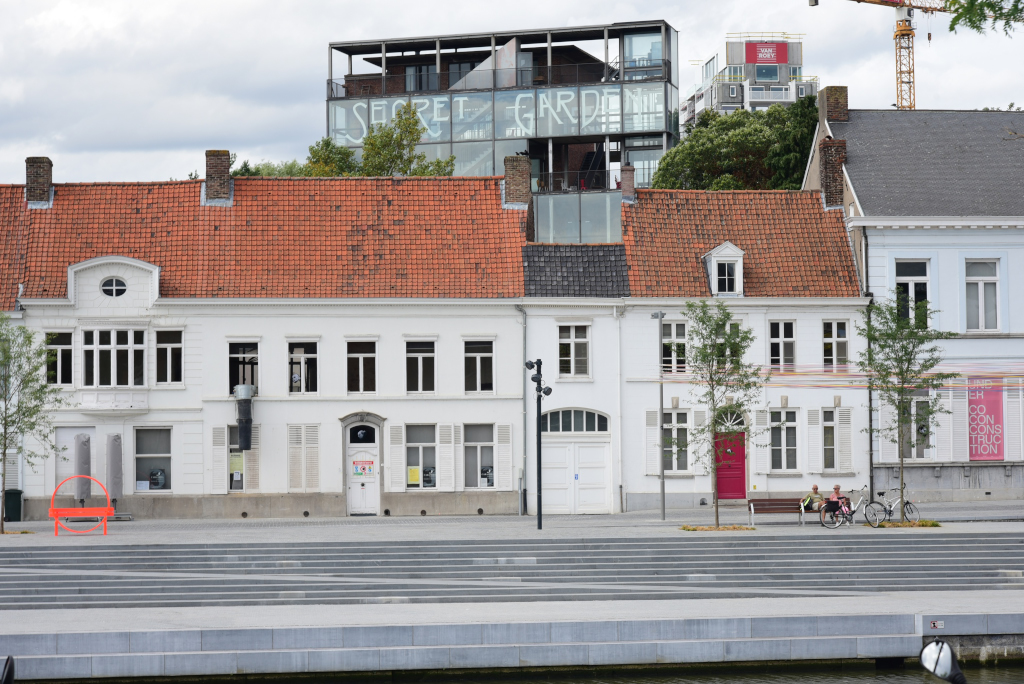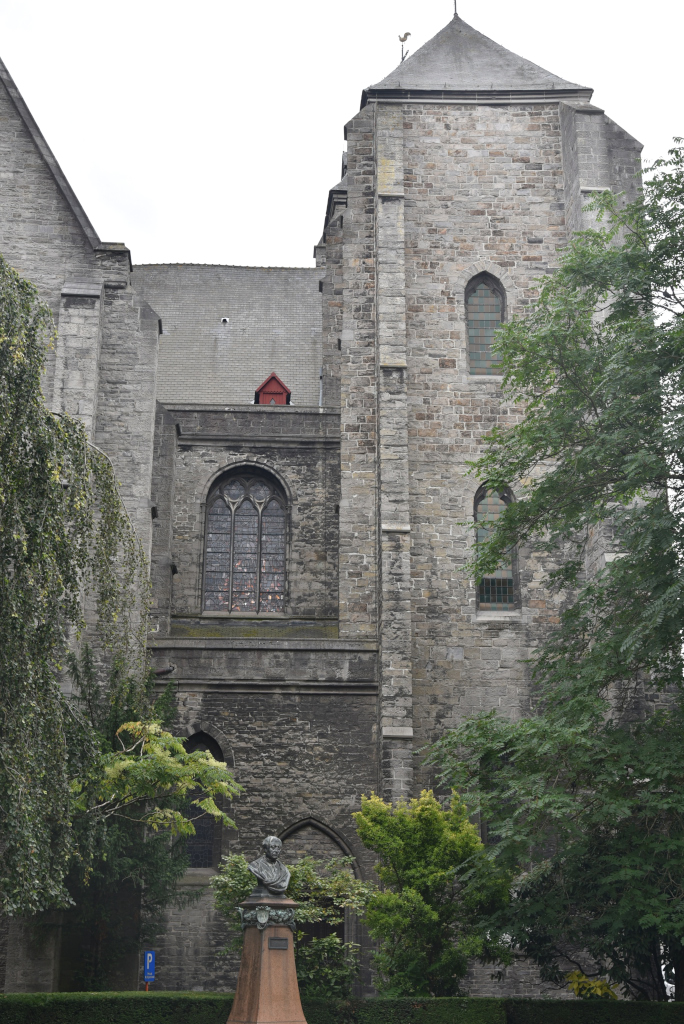July 30, 2018
Kortrijk is located on the river Leie, 42 km southwest of Ghent and 25 km northeast of Lille. The last urban centre on the western side of Flanders in Belgium before reaching the French border and the expansive confluence of metropolitan Lille, Kortrijk appears from the outskirts at best unassuming, if not drab.
Broaching the town, however, an astonishing urban gem appears, diverse, intriguing, unique and stylish at every turn, the remnants of stunning medieval and Renaissance architecture complimented by spectacular works from subsequent eras, ranging into the contemporary, each era of inevitable war and destruction providing their opportunities to create architectural legacies reflecting the age.
Kortrijk originated as the Gallo-Roman town Cortoriacum. Then in the 9th century, Baldwin II, Count of Flanders established fortifications against the Vikings. The town gained its city charter in 1190 from Philip, Count of Flanders. The population growth required new defensive walls, part of which can still be seen today (the Broeltorens, Armory, Kortrijk). Several local places still refer to physical parts of the defensive structures around Kortrijk (Walle, Waterpoort, Menenpoort, Gentsepoort, Brugsepoort, Kasteelkaai), although the physical remnants of the fortifications are no longer present.
In the Middle Ages, Kortrijk grew significantly thanks to the flax and wool industry with France and England, and became one of the biggest and richest cities in Flanders. Throughout the 19th and 20th century, the flax industry flourished, and remains important within the Belgian textile industry today.
In the 13th century, the battles between Fernando of Portugal, Count of Flanders and his first cousin, King Louis VIII of France, led to the destruction of the city. In 1302, the population of Bruges started a successful uprising against the French, who had annexed Flanders a couple of years earlier. On 18 May the French population in that city was massacred, an event that could not go unpunished.
The famous ensuing Battle of Courtrai or the Battle of the Golden Spurs between the Flemish people, mostly commoners and farmers, and French knights took place near Kortrijk on 11 July, resulting in a victory for Flanders. This date is now remembered as a national holiday by the whole Flemish community.
Following a new uprising by the Flemish in 1323, but this time against their own Count Louis I, the French invaded again. These Flemish acquisitions were consolidated by the French at the Battle of Cassel (1328). Louis I’s son, Louis II, then Philip van Artevelde briefly regained the city in 1381 but lost it again the following year at the Battle of Roosebeke, resulting in a new wave of plundering and destruction. Most of the 15th century was prosperous under the Dukes of Burgundy, until the death of the Burgundian heiress, Mary of Burgundy, in 1482, which ushered in renewed fighting with France.
The 16th century was marked by the confrontations engendered by the Reformation and the uprising of the Netherlands against Spain. Louis XIV’s reign saw Kortrijk occupied by the French five times in sixty years and its former fortifications razed. The Treaty of Utrecht finally assigned the whole area to Austria.
After the French Revolution and the Napoleonic era, the textile industry, based on flax, and the general economy of the city could finally prosper again. In 1820, the Treaty of Kortrijk was signed, which laid out the current borders between France and Belgium.
(Narrative excerpted from Wikipedia)

